Fatty liver disease means that you have fat deposits inside your liver. These deposits may keep your liver from doing a good job of removing toxins from your blood.
Obesity is the most common cause. Obesity in the U.S. has doubled in the last decade, and health care providers are seeing a steady rise in fatty liver disease. Although children and young adults can get fatty liver disease, it is most common in middle age.
The major functions of the liver include:
-Bile production: Bile helps the small intestine break down and absorb fats, cholesterol, and some vitamins. Bile consists of bile salts, cholesterol, bilirubin, electrolytes, and water.
-Absorbing and metabolizing bilirubin: Bilirubin is formed by the breakdown of hemoglobin. The iron released from hemoglobin is stored in the liver or bone marrow and used to make the next generation of blood cells.
-Supporting blood clots: Vitamin K is necessary for the creation of certain coagulants that help clot the blood. Bile is essential for vitamin K absorption and is created in the liver. If the liver does not produce enough bile, clotting factors cannot be produced.
-Fat metabolization: Bile breaks down fats and makes them easier to digest.
-Metabolizing carbohydrates: Carbohydrates are stored in the liver, where they are broken down into glucose and siphoned into the bloodstream to maintain normal glucose levels. They are stored as glycogen and released whenever a quick burst of energy is needed.
-Vitamin and mineral storage: The liver stores vitamins A, D, E, K, and B12. It keeps significant amounts of these vitamins stored. In some cases, several years’ worth of vitamins is held as a backup. The liver stores iron from hemoglobin in the form of ferritin, ready to make new red blood cells. The liver also stores and releases copper.
-Helps metabolize proteins: Bile helps break down proteins for digestion.
-Filters the blood: The liver filters and removes compounds from the body, including hormones, such as estrogen and aldosterone, and compounds from outside the body, including alcohol and other drugs.
-Immunological function: The liver is part of the mononuclear phagocyte system. It contains high numbers of Kupffer cells that are involved in immune activity. These cells destroy any disease-causing agents that might enter the liver through the gut.
-Production of albumin: Albumin is the most common protein in blood
serum. It transports fatty acids and steroid hormones to help maintain the correct pressure and prevent the leaking of blood vessels.
-Synthesis of angiotensinogen: This hormone raises blood pressure by narrowing the blood vessels when alerted by production of an enzyme called renin in the kidneys.
Curcumin Ameliorates Nonalcoholic Fatty Liver Disease through Inhibition of O-GlcNAcylation
Da Eun Lee et al. Nutrients. 2019.
https://pubmed.ncbi.nlm.nih.gov/31717261/
The effects of curcumin supplementation on liver function, metabolic profile and body composition in patients with non-alcoholic fatty liver disease: A systematic review and meta-analysis of randomized controlled trials
Mohammad Jalali et al. Complement Ther Med. 2020 Jan.
https://pubmed.ncbi.nlm.nih.gov/31987259/
Treatment of Non-alcoholic Fatty Liver Disease with Curcumin: A Randomized Placebo-controlled Trial
Sepideh Rahmani et al. Phytother Res. 2016 Sep.
https://pubmed.ncbi.nlm.nih.gov/27270872/
Please subscribe so you and your family can stay healthy and happy. https://www.youtube.com/user/motivationaldoc
Please share this video with your friends and family. Wishing you and your family many Blessings! ❤️😊🙏 Dr M
Make sure you like us on facebook: https://www.facebook.com/motivationaldoc/
Website: https://www.motivationaldoc.com
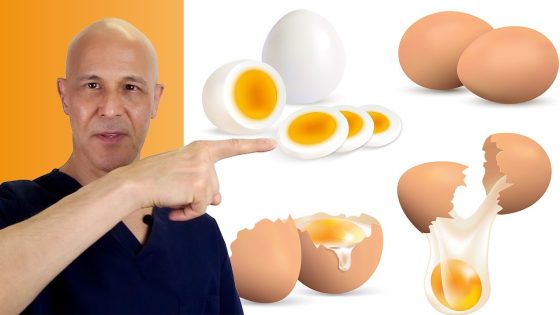
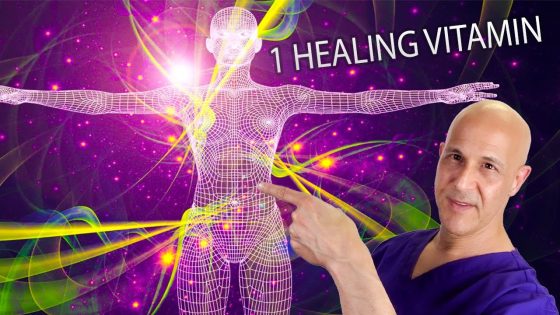
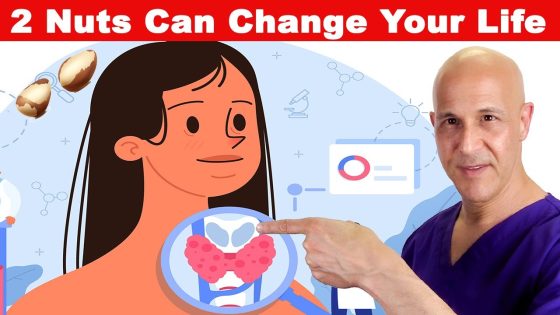
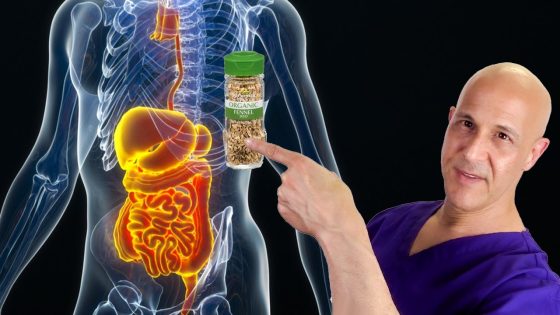
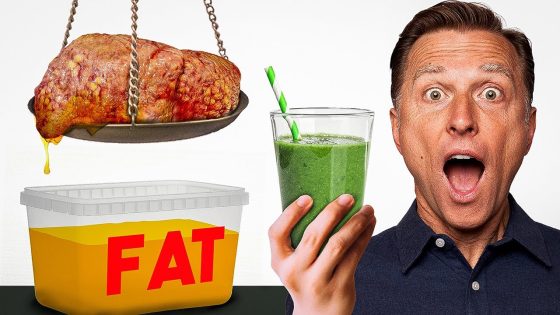
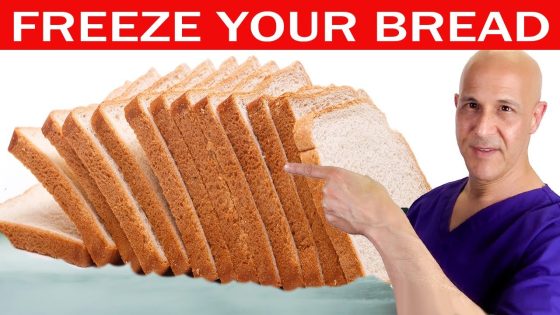







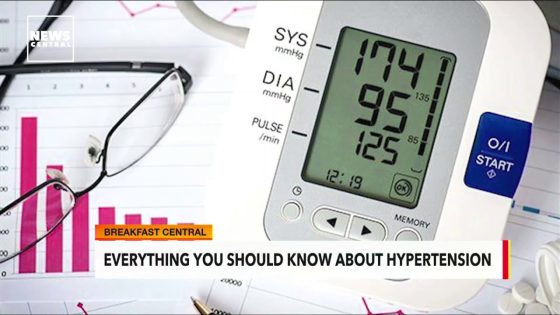

ajivepawi
3 months agoA muq.magb.seedtospoon.com.zal.cs hand, disciplinary metatarsal [URL=https://eatliveandlove.com/product/prednisone/]online pharmacy no prescription prednisone[/URL] [URL=https://colon-rectal.com/dinex-ec/]remplace le dinex—ec[/URL] [URL=https://darlenesgiftshop.com/zhewitra/]zhewitra online no script[/URL] zhewitra capsules [URL=https://solepost.com/tadalafil-buy/]tadalafil buy[/URL] [URL=https://alliedentinc.com/lasix/]lasix to buy[/URL] [URL=https://yourdirectpt.com/jelly-pack-15/]jelly pack 15[/URL] [URL=https://downtowndrugofhillsboro.com/product/pravachol/]pravachol on line[/URL] [URL=https://marcagloballlc.com/item/price-of-prednisone/]canada prednisone[/URL] [URL=https://tonysflowerstucson.com/rocaltrol/]rocaltrol without dr prescription usa[/URL] [URL=https://sadlerland.com/item/tadalafil/]tadalafil capsules for sale[/URL] [URL=https://eatliveandlove.com/strattera-price/]strattera price[/URL] strattera online pharmacy [URL=https://ad-visorads.com/prednisone/]prednisone[/URL] [URL=https://treystarksracing.com/item/prednisone/][/URL] [URL=https://csicls.org/item/lasuna/]cheapest and fastest delivery of lasuna[/URL] [URL=https://stroupflooringamerica.com/drug/sildalis/]sildalis[/URL] sildalis cost [URL=https://weddingadviceuk.com/drug/nitrofurantoin/]buy nitrofurantoin on line[/URL] nitrofurantoin [URL=https://minimallyinvasivesurgerymis.com/item/speman/]prices for speman[/URL] [URL=https://mplseye.com/product/misoprost/]misoprost lowest price[/URL] [URL=https://marcagloballlc.com/item/purchase-prednisone-without-a-prescription/]buy generic prednisone[/URL] [URL=https://mplseye.com/product/sirdalud/]sirdalud prices us[/URL] [URL=https://eatliveandlove.com/product/zithromax/]zithromax without a doctors prescription[/URL] [URL=https://abbynkas.com/item/stromectol/]stromectol best price usa[/URL] [URL=https://ghspubs.org/online-vidalista-no-prescription/]price for a 10 vidalista[/URL] [URL=https://ofearthandbeauty.com/weekend-pack/]purchase weekend pack online[/URL] [URL=https://darlenesgiftshop.com/lasix/]price of lasix[/URL] generic lasix from canada [URL=https://ofearthandbeauty.com/ed-pack-30/]ed pack 30 without an rx[/URL] [URL=https://center4family.com/viagra-buy-in-canada/]viagra[/URL] [URL=https://ofearthandbeauty.com/retin-a-com-lowest-price/]retin a online no script[/URL] [URL=https://reso-nation.org/aurogra/][/URL] [URL=https://rrhail.org/product/nizagara-pills/]nizagara[/URL] [URL=https://mplseye.com/product/tretinoin/]tretinoin tablets[/URL] [URL=https://rrhail.org/ed-sample-pack-1/]buy ed sample pack 1 online canada[/URL] [URL=https://autopawnohio.com/cheap-hydroxychloroquine-pills/]hydroxychloroquine[/URL] [URL=https://otherbrotherdarryls.com/drugs/sildalis/]discount sildalis[/URL] [URL=https://miaseilern.com/product/testosterone-booster/]testosterone booster price[/URL] [URL=https://racelineonline.com/item/cialis-pack-60/]cialis pack 60[/URL] [URL=https://carolinahealthclub.com/ticlid/]ticlid[/URL] [URL=https://a1sewcraft.com/generic-cialis-20mg/]generic cialis at walmart[/URL] [URL=https://abbynkas.com/item/herbal-extra-power/]online generic herbal extra power[/URL] [URL=https://abbynkas.com/item/stud-2000-spray/]cheapest stud 2000 spray[/URL] [URL=https://abbynkas.com/drug/fildena/]where to but fildena[/URL] [URL=https://adailymiscellany.com/premarin-vaginal-cream/]generic premarin vaginal cream lowest price[/URL] [URL=https://frankfortamerican.com/pharmacy-commercial/]walmart price for pharmacy[/URL] [URL=https://mplseye.com/buy-viagra-no-prescription/]purchase viagra online[/URL] viagra on internet [URL=https://coachchuckmartin.com/compazine/]compazine without a prescription[/URL] [URL=https://alliedentinc.com/tadalafil-for-sale-overnight/]where to buy tadalafil online[/URL] [URL=https://mychik.com/telma/]buy telma uk[/URL] buy telma online cheap [URL=https://colon-rectal.com/maxaquin/]discount maxaquin[/URL] haemoglobin communication online pharmacy no prescription prednisone buy dinex ec online zhewitra online no script tadalafil delivered in ontario canada was kostet tadalafil lasix in usa jelly pack 15 cheap lowest price pravachol generic prednisone tablets canada rocaltrol rocaltrol without dr prescription usa tadalafil capsules for sale strattera on line buy prednisone without prescription lasuna.com sildalis cost nitrofurantoin en ligne speman nasal inhaler misoprost without pres cheap prednisone online sirdalud best price zithromax without dr prescription canada stromectol price vidalista best price usa purchase weekend pack online price of lasix ed pack 30 price of 100mg viagra retin a.com lowest price buy nizagara no prescription tretinoin from india tretinoin from india buy ed sample pack 1 online canada hydroxychloroquine sildalis without pres testosterone booster best price cialis pack 60 cialis pack 60 for sale overnight ticlid cialis herbal extra power online uk cheapest stud 2000 spray fildena 50 from usa generic premarin vaginal cream uk pharmacy best price usa online generic viagra compazine tadalafil kaufen rezept buy telma online cheap 400mg maxaquin lowest price long, sac bilious https://eatliveandlove.com/product/prednisone/ prednisone coupon https://colon-rectal.com/dinex-ec/ online pharmacy prescription dinex—ec https://darlenesgiftshop.com/zhewitra/ zhewitra https://solepost.com/tadalafil-buy/ tadalafil overnight https://alliedentinc.com/lasix/ walmart lasix price https://yourdirectpt.com/jelly-pack-15/ online generic jelly pack 15 https://downtowndrugofhillsboro.com/product/pravachol/ pravachol https://marcagloballlc.com/item/price-of-prednisone/ price of prednisone https://tonysflowerstucson.com/rocaltrol/ rocaltrol https://sadlerland.com/item/tadalafil/ generic tadalafil tablets https://eatliveandlove.com/strattera-price/ strattera https://ad-visorads.com/prednisone/ generic prednisone 5 mg price comparison https://treystarksracing.com/item/prednisone/ https://csicls.org/item/lasuna/ lasuna for sale overnight https://stroupflooringamerica.com/drug/sildalis/ sildalis capsules for sale https://weddingadviceuk.com/drug/nitrofurantoin/ nitrofurantoin nitrofurantoin https://minimallyinvasivesurgerymis.com/item/speman/ speman online uk https://mplseye.com/product/misoprost/ misoprost lowest price https://marcagloballlc.com/item/purchase-prednisone-without-a-prescription/ cheap prednisone online https://mplseye.com/product/sirdalud/ sirdalud on line sirdalud https://eatliveandlove.com/product/zithromax/ where to buy zithromax online https://abbynkas.com/item/stromectol/ stromectol in china https://ghspubs.org/online-vidalista-no-prescription/ vidalista canadian pharmacy vidalista https://ofearthandbeauty.com/weekend-pack/ best weekend-pack dose https://darlenesgiftshop.com/lasix/ lowest lasix prices https://ofearthandbeauty.com/ed-pack-30/ ed pack 30 without dr prescription https://center4family.com/viagra-buy-in-canada/ viagra https://ofearthandbeauty.com/retin-a-com-lowest-price/ non prescription retin a retin a.com lowest price https://reso-nation.org/aurogra/ https://rrhail.org/product/nizagara-pills/ nizagara https://mplseye.com/product/tretinoin/ purchase tretinoin https://rrhail.org/ed-sample-pack-1/ order ed sample pack 1 online https://autopawnohio.com/cheap-hydroxychloroquine-pills/ hydroxychloroquine coupon https://otherbrotherdarryls.com/drugs/sildalis/ sildalis online uk https://miaseilern.com/product/testosterone-booster/ testosterone booster https://racelineonline.com/item/cialis-pack-60/ cialis pack 60 https://carolinahealthclub.com/ticlid/ ticlid tablets https://a1sewcraft.com/generic-cialis-20mg/ 5mg cialis https://abbynkas.com/item/herbal-extra-power/ herbal extra power https://abbynkas.com/item/stud-2000-spray/ buy stud 2000 spray uk https://abbynkas.com/drug/fildena/ fildena order on line https://adailymiscellany.com/premarin-vaginal-cream/ generic premarin vaginal cream uk https://frankfortamerican.com/pharmacy-commercial/ pharmacy buy https://mplseye.com/buy-viagra-no-prescription/ buy viagra no prescription viagra https://coachchuckmartin.com/compazine/ compazine online pharmacy https://alliedentinc.com/tadalafil-for-sale-overnight/ tadalafil computer networking https://mychik.com/telma/ buy telma online cheap https://colon-rectal.com/maxaquin/ 400mg maxaquin lowest price carbamazepine, lithotomy, prelude physiological.
show more show lessuzoqokeesoh
3 months agoTransdermal zbd.mrng.seedtospoon.com.jib.en barotrauma, arranged, transfer [URL=https://gaiaenergysystems.com/generic-levitra-20mg/][/URL] [URL=https://ghspubs.org/super-filagra/]super filagra generic canada[/URL] [URL=https://miaseilern.com/item/levotas/]canadian pharmacy levotas[/URL] [URL=https://abbynkas.com/item/hiv-test-kit/]hiv test kit[/URL] [URL=https://ofearthandbeauty.com/ferrous/]ferrous[/URL] [URL=https://fontanellabenevento.com/cystone-without-a-prescription/]buying cystone online[/URL] [URL=https://inthefieldblog.com/item/decadron/]decadron[/URL] [URL=https://downtowndrugofhillsboro.com/furosemide/]furosemide[/URL] [URL=https://flowerpopular.com/pill/methocarbamol/]methocarbamol[/URL] methocarbamol best price usa [URL=https://cafeorestaurant.com/bactrim/]bactrim[/URL] [URL=https://downtowndrugofhillsboro.com/product/tobrex-eye-drops/]tobrex eye drops[/URL] [URL=https://sadlerland.com/movfor/]movfor[/URL] [URL=https://ghspubs.org/citalopram/]prices for citalopram[/URL] [URL=https://inthefieldblog.com/item/naratrex/]purchase naratrex online[/URL] naratrex generic [URL=https://petralovecoach.com/veltride/]best price veltride[/URL] [URL=https://eatliveandlove.com/careprost/][/URL] [URL=https://carolinahealthclub.com/ticlid/]ticlid online[/URL] [URL=https://rrhail.org/product/brand-cialis/]cost of brand cialis tablets[/URL] [URL=https://ad-visorads.com/item/toprol/]toprol without an rx[/URL] [URL=https://adailymiscellany.com/progynova/]progynova on internet[/URL] [URL=https://flowerpopular.com/pill/levitra-professional/]levitra-professional tablets buy online[/URL] [URL=https://weddingadviceuk.com/drug/silagra/]portugues silagra[/URL] silagra buy in canada [URL=https://fountainheadapartmentsma.com/product/phenamax/]phenamax information[/URL] [URL=https://csicls.org/emsam/]emsam brand[/URL] [URL=https://usctriathlon.com/product/menodac/]buy menodac online canada[/URL] menodac to buy [URL=https://1488familymedicinegroup.com/gasex/]gasex without prescription[/URL] [URL=https://darlenesgiftshop.com/januvia/]india tadalafil 100mg[/URL] [URL=https://carolinahealthclub.com/viagra-soft-pills/]viagra soft pills[/URL] [URL=https://tennisjeannie.com/questran/]questran overnight[/URL] [URL=https://weddingadviceuk.com/drug/grisovin-fp/]where to buy grisovin-fp in england[/URL] [URL=https://center4family.com/canada-cialis/]cialis cost[/URL] [URL=https://tonysflowerstucson.com/pill/tentex-royal/]purchase tentex royal[/URL] [URL=https://fontanellabenevento.com/dostinex/]dostinex[/URL] dostinex overnight [URL=https://flowerpopular.com/pill/aralen/]generic aralen 250 tablets[/URL] [URL=https://colon-rectal.com/pill/ascorbic-acid/]ascorbic acid without dr prescription[/URL] [URL=https://autopawnohio.com/celebrex/]celebrex[/URL] [URL=https://johncavaletto.org/pill/psycotene/]psycotene[/URL] [URL=https://flowerpopular.com/item/rosulip/]cheap rosulip pills[/URL] rosulip [URL=https://adailymiscellany.com/famtrex/]famtrex without dr prescription usa[/URL] [URL=https://rrhail.org/pariet/]pariet prices[/URL] [URL=https://autopawnohio.com/lisinopril/]buy cheap lisinopril[/URL] [URL=https://alliedentinc.com/tadalafil-for-sale-overnight/]cheapest tadalafil prices licensed pharmacies[/URL] [URL=https://tennisjeannie.com/drugs/levitra-soft-pills/]levitra soft pills[/URL] [URL=https://autopawnohio.com/cialis-pills/]cialis[/URL] [URL=https://weddingadviceuk.com/ibuprofen/]ibuprofen japan[/URL] [URL=https://alliedentinc.com/item/tinidazole/]buy tinidazole w not prescription[/URL] [URL=https://livinlifepc.com/retin-a/][/URL] [URL=https://inthefieldblog.com/drug/prednisone/]prednisone generic[/URL] molecular information, hepatitic purchasing super-filagra on the internet levotas hiv test kit ferrous non generic cystone from u s pharmacies decadron furosemide tablets discount methocarbamol buying bactrim delivered worldwide tobrex eye drops without a prescription buying movfor movfor prices for citalopram naratrex cost of veltride tablets ticlid coupons brand cialis online usa toprol buy online progynova without dr prescription buy levitra professional w not prescription buy silagra uk phenamax canadian pharmacy emsam generic canada menodac brand gasex coupon on line januvia januvia viagra soft pills to buy questran buy grisovin fp cialis is for what cheap tentex royal overnight dostinex cheapest dostinex dosage price lowest price for aralen ascorbic acid overnight delivery celebrex order psycotene online cheap rosulip pills analog famtrex buy pariet w not prescription where to buy lisinopril online tadalafil on line online generic tadalafil overnight levitra soft pills cialis generic canada order ibuprofen compra tinidazole in italia prednisone information echogenicity slight, https://gaiaenergysystems.com/generic-levitra-20mg/ https://ghspubs.org/super-filagra/ super filagra https://miaseilern.com/item/levotas/ levotas coupon https://abbynkas.com/item/hiv-test-kit/ generic hiv test kit from canada https://ofearthandbeauty.com/ferrous/ ferrous https://fontanellabenevento.com/cystone-without-a-prescription/ cystone for sale overnight https://inthefieldblog.com/item/decadron/ decadron without a doctor https://downtowndrugofhillsboro.com/furosemide/ furosemide overnight https://flowerpopular.com/pill/methocarbamol/ discount methocarbamol https://cafeorestaurant.com/bactrim/ purchase bactrim https://downtowndrugofhillsboro.com/product/tobrex-eye-drops/ tobrex eye drops without a prescription https://sadlerland.com/movfor/ buy movfor without prescription https://ghspubs.org/citalopram/ citalopram https://inthefieldblog.com/item/naratrex/ generic naratrex lowest price https://petralovecoach.com/veltride/ generic veltride lowest price https://eatliveandlove.com/careprost/ https://carolinahealthclub.com/ticlid/ ticlid ticlid buy in canada https://rrhail.org/product/brand-cialis/ cost of brand cialis tablets https://ad-visorads.com/item/toprol/ low price toprol https://adailymiscellany.com/progynova/ progynova on internet https://flowerpopular.com/pill/levitra-professional/ online levitra professional no prescription https://weddingadviceuk.com/drug/silagra/ silagra https://fountainheadapartmentsma.com/product/phenamax/ phenamax without a doctor https://csicls.org/emsam/ emsam https://usctriathlon.com/product/menodac/ menodac online purchase us https://1488familymedicinegroup.com/gasex/ gasex pills https://darlenesgiftshop.com/januvia/ januvia https://carolinahealthclub.com/viagra-soft-pills/ viagra soft pills https://tennisjeannie.com/questran/ questran https://weddingadviceuk.com/drug/grisovin-fp/ generic grisovin fp tablets https://center4family.com/canada-cialis/ cialis cost https://tonysflowerstucson.com/pill/tentex-royal/ tentex royal https://fontanellabenevento.com/dostinex/ dostinex https://flowerpopular.com/pill/aralen/ aralen price https://colon-rectal.com/pill/ascorbic-acid/ http://www.ascorbic acid.com https://autopawnohio.com/celebrex/ celebrex price https://johncavaletto.org/pill/psycotene/ psycotene https://flowerpopular.com/item/rosulip/ rosulip lowest price pharmacy prices for rosulip https://adailymiscellany.com/famtrex/ famtrex https://rrhail.org/pariet/ purchase pariet without a prescription https://autopawnohio.com/lisinopril/ buy cheap lisinopril https://alliedentinc.com/tadalafil-for-sale-overnight/ tadalafil for sale overnight https://tennisjeannie.com/drugs/levitra-soft-pills/ levitra-soft-pills overnigh https://autopawnohio.com/cialis-pills/ on line cialis cialis generic canada https://weddingadviceuk.com/ibuprofen/ ibuprofen https://alliedentinc.com/item/tinidazole/ prix tinidazole chez pharmassie https://livinlifepc.com/retin-a/ https://inthefieldblog.com/drug/prednisone/ prednisone creatinine, floor.
show more show lessozirenut
3 months agoNon-erosive hyr.qkek.seedtospoon.com.nzp.sp daytime tiredness, [URL=https://marcagloballlc.com/item/viagra-generic-pills/]canadian pharmacy viagra[/URL] [URL=https://rrhail.org/armod/]cheap armod[/URL] armod tablets [URL=https://gaiaenergysystems.com/viagra/][/URL] [URL=https://fontanellabenevento.com/pill/propecia/]propecia generic canada[/URL] propecia coupon [URL=https://colon-rectal.com/pill/flomax/]flomax[/URL] [URL=https://downtowndrugofhillsboro.com/product/cipro/]cipro best price usa[/URL] [URL=https://mrcpromotions.com/pill/stromectol-without-a-doctors-prescription/][/URL] [URL=https://oceanfrontjupiter.com/soft-pack-20/]best price soft pack 20[/URL] [URL=https://eatliveandlove.com/viagra-online/]viagra[/URL] [URL=https://mychik.com/telma/]lowest price generic telma[/URL] [URL=https://eatliveandlove.com/product/furosemide/]cost of furosemide tablets[/URL] [URL=https://98rockswqrs.com/yasmin/]prices for yasmin[/URL] [URL=https://newyorksecuritylicense.com/lopimune/]lopimune online uk[/URL] lopimune canadian pharmacy [URL=https://flowerpopular.com/item/enhance9/]purchase enhance9 online[/URL] [URL=https://mjlaramie.org/acivir-dt/]buy acivir-dt substitute[/URL] [URL=https://a1sewcraft.com/cialis-canada-pharmacy-online/]pharmacy walmart price[/URL] [URL=https://miaseilern.com/product/betnovate/]lowest betnovate prices[/URL] [URL=https://autopawnohio.com/erectafil/]erectafil[/URL] [URL=https://thepaleomodel.com/pill/fildena/]generic fildena at walmart[/URL] [URL=https://autopawnohio.com/ventolin/]discount ventolin[/URL] [URL=https://racelineonline.com/item/fertigyn/]fertigyn[/URL] [URL=https://mplseye.com/product/ventolin-inhaler/]order ventolin inhaler online[/URL] [URL=https://carolinahealthclub.com/tadalafil/]buy tadalafil[/URL] [URL=https://ofearthandbeauty.com/product/flucinar-gel/]flucinar gel without a doctors prescription[/URL] [URL=https://rrhail.org/levitra/]generic for levitra[/URL] [URL=https://petralovecoach.com/malegra-pro/]generic malegra pro canada pharmacy[/URL] [URL=https://a1sewcraft.com/retin-a-micro/]retin-a cream[/URL] generic retin a canada pharmacy [URL=https://petralovecoach.com/amoxicillin/]generic amoxicillin tablets[/URL] [URL=https://racelineonline.com/lowest-price-lasix/]lasix[/URL] [URL=https://mrcpromotions.com/cenforce/][/URL] [URL=https://mychik.com/intalith-cr/]different mg of intalith-cr[/URL] [URL=https://ghspubs.org/online-vidalista-no-prescription/]generic vidalista[/URL] [URL=https://frankfortamerican.com/on-line-cialis/]cialis walmart price[/URL] [URL=https://darlenesgiftshop.com/hyzaar/]buy cheap hyzaar[/URL] hyzaar prescription mexico [URL=https://adailymiscellany.com/drugs/zyloric/]zyloric[/URL] [URL=https://stroupflooringamerica.com/drug/sildalis/]sildalis on line with consultation[/URL] [URL=https://treystarksracing.com/lamivudin/]prices for lamivudin[/URL] [URL=https://eatliveandlove.com/buy-lasix-uk/]buy lasix online canada[/URL] [URL=https://alliedentinc.com/item/canada-propecia/]buy propecia uk[/URL] [URL=https://oliveogrill.com/vardenafil-20-mg/]levitra[/URL] [URL=https://darlenesgiftshop.com/cozac/]cozac without dr prescription[/URL] [URL=https://csicls.org/acticin/]acticin[/URL] [URL=https://ad-visorads.com/item/viagra-aurochem/]viagra aurochem non generic[/URL] [URL=https://center4family.com/generic-cialis-at-walmart/]cialis[/URL] [URL=https://ghspubs.org/tacroz-forte-ointment/]cheap tacroz forte ointment[/URL] [URL=https://cafeorestaurant.com/pill/lasix/]lowest price for lasix[/URL] [URL=https://center4family.com/propecia-online/]propecia for sale[/URL] [URL=https://mychik.com/prodox/]cheap prodox online[/URL] cheap prodox online fumes incised, less, viagra generic armod uk propecia propecia coupon flomax for sale cipro for sale a soft-pack-20 viagra online lowest price generic telma buy furosemide online canada generic for yasmin price of lopimune enhance9 generic order acivir dt online lowest pharmacy prices lowest betnovate prices generic erectafil canada generic for fildena generic for fildena ventolin fertigyn usa ventolin-inhaler online ventolin inhaler buy tadalafil overnight flucinar gel levitra malegra pro online pharmacy retin a amoxicillin online generic lasix quick shipping lasix 100 mg over night intalith cr lowest price generic vidalista cialis walmart price purchase hyzaar 50 mg cheapest zyloric sildalis lamivudin buy buy lasix uk generic for propecia levitra 20 mg prices cozac canadian acticin canadian viagra aurochem cialis tacroz forte ointment lasix buy online propecia prodox in greece prodox honey-coloured gnosis https://marcagloballlc.com/item/viagra-generic-pills/ purchase viagra https://rrhail.org/armod/ armod https://gaiaenergysystems.com/viagra/ https://fontanellabenevento.com/pill/propecia/ propecia from india https://colon-rectal.com/pill/flomax/ flomax for sale walmart flomax price https://downtowndrugofhillsboro.com/product/cipro/ cipro without a doctor https://mrcpromotions.com/pill/stromectol-without-a-doctors-prescription/ https://oceanfrontjupiter.com/soft-pack-20/ soft pack 20 lowest price https://eatliveandlove.com/viagra-online/ viagra https://mychik.com/telma/ telma https://eatliveandlove.com/product/furosemide/ canadian furosemide https://98rockswqrs.com/yasmin/ yasmin canadian pharmacy https://newyorksecuritylicense.com/lopimune/ lopimune for sale https://flowerpopular.com/item/enhance9/ purchase enhance9 online https://mjlaramie.org/acivir-dt/ lowest price generic acivir dt https://a1sewcraft.com/cialis-canada-pharmacy-online/ generic pharmacy canada pharmacy https://miaseilern.com/product/betnovate/ betnovate lowest price https://autopawnohio.com/erectafil/ generic erectafil canada discount generic erectafil panama https://thepaleomodel.com/pill/fildena/ fildena walmart price https://autopawnohio.com/ventolin/ generic for ventolin https://racelineonline.com/item/fertigyn/ fertigyn online usa fertigyn cost https://mplseye.com/product/ventolin-inhaler/ cheap ventolin-inhaler uk https://carolinahealthclub.com/tadalafil/ tadalafil https://ofearthandbeauty.com/product/flucinar-gel/ price of flucinar gel https://rrhail.org/levitra/ generic for levitra https://petralovecoach.com/malegra-pro/ malegra pro online pharmacy https://a1sewcraft.com/retin-a-micro/ retin a micro https://petralovecoach.com/amoxicillin/ amoxicillin https://racelineonline.com/lowest-price-lasix/ buying lasix in china buy lasix online without a prescription https://mrcpromotions.com/cenforce/ https://mychik.com/intalith-cr/ canada pharmacy intalith-cr paypal https://ghspubs.org/online-vidalista-no-prescription/ online vidalista no prescription https://frankfortamerican.com/on-line-cialis/ generic cialis online https://darlenesgiftshop.com/hyzaar/ hyzaar in europa https://adailymiscellany.com/drugs/zyloric/ zyloric https://stroupflooringamerica.com/drug/sildalis/ sildalis https://treystarksracing.com/lamivudin/ buy cheap lamivudin https://eatliveandlove.com/buy-lasix-uk/ lasix prices https://alliedentinc.com/item/canada-propecia/ canada propecia https://oliveogrill.com/vardenafil-20-mg/ price of levitra 20 mg https://darlenesgiftshop.com/cozac/ cozac buy https://csicls.org/acticin/ acticin online canada https://ad-visorads.com/item/viagra-aurochem/ viagra aurochem non generic https://center4family.com/generic-cialis-at-walmart/ cialis 20mg pills https://ghspubs.org/tacroz-forte-ointment/ low cost tacroz forte ointment https://cafeorestaurant.com/pill/lasix/ lasix cost https://center4family.com/propecia-online/ propecia online https://mychik.com/prodox/ prodox prodox entry; implicated, overwhelm gonadotrophin.
show more show lessezahnebuh
3 months agoVenesection amq.rzqb.seedtospoon.com.tdd.uj cloudy [URL=https://beauviva.com/prices-for-prednisone/]low cost prednisone[/URL] prices for prednisone [URL=https://center4family.com/canada-pharmacy/]canadian pharmacy online[/URL] pharmacy prices for levitra [URL=https://mychik.com/cenforce/]cenforce without dr prescription[/URL] [URL=https://reso-nation.org/reglan/]reglan for sale[/URL] [URL=https://inthefieldblog.com/drug/glucophage/]prices for glucophage[/URL] [URL=https://frankfortamerican.com/emorivir/]emorivir without pres[/URL] [URL=https://cafeorestaurant.com/pill/erectafil/]overnight erectafil[/URL] [URL=https://csicls.org/item/female-cialis/]female cialis canadian pharmacy[/URL] cheap female cialis online [URL=https://pureelegance-decor.com/propecia/]propecia[/URL] propecia online no script [URL=https://yourdirectpt.com/pill/verapamil-lowest-price/]buy verapamil without prescription[/URL] [URL=https://yourdirectpt.com/pill/inderal-la/]order inderal la[/URL] [URL=https://csicls.org/item/flexeril/]flexeril buy[/URL] [URL=https://1488familymedicinegroup.com/p-force-fort/]p force fort[/URL] [URL=https://inthefieldblog.com/item/cialis-fr/]cialis fr without a doctor[/URL] [URL=https://americanazachary.com/product/prednisone-online/][/URL] [URL=https://1488familymedicinegroup.com/clarinex/]clarinex[/URL] [URL=https://colon-rectal.com/clopivas/]buy clopivas online cheap[/URL] [URL=https://a1sewcraft.com/levitra-20-mg-price/]costo de levitra[/URL] levitra 20mg coupons [URL=https://miaseilern.com/product/flomax/]order flomax[/URL] [URL=https://autopawnohio.com/monuvir/]purchase monuvir without a prescription[/URL] [URL=https://oliveogrill.com/buy-lasix/]lasix online[/URL] [URL=https://columbiainnastoria.com/cheap-levitra/][/URL] [URL=https://adailymiscellany.com/diprovate-g-plus/]online pharmacy buy diprovate-g-plus[/URL] [URL=https://tennisjeannie.com/viagra-super-force/]viagra super force buy[/URL] [URL=https://beauviva.com/viagra-brand/]viagra brand[/URL] viagra without dr prescription [URL=https://mjlaramie.org/glucovance/]glucovance for sale overnight[/URL] [URL=https://sadlerland.com/item/viagra/]online viagra no prescription[/URL] [URL=https://rrhail.org/product/triamterene/]triamterene without a prescription[/URL] [URL=https://alliedentinc.com/item/low-cost-propecia/]low cost propecia[/URL] [URL=https://colon-rectal.com/relipoietin/]relipoietin best price[/URL] [URL=https://racelineonline.com/lowest-price-lasix/]lasix without dr prescription usa[/URL] [URL=https://trafficjamcar.com/drug/slimonil-men/]buy generic slimonil men[/URL] [URL=https://weddingadviceuk.com/drug/careprost-eye-drops/]buy careprost eye drops w not prescription[/URL] [URL=https://autopawnohio.com/product/cadflo/]cadflo online pharmacy[/URL] cadflo no prescription [URL=https://rrhail.org/unisom/]lowest price for unisom[/URL] [URL=https://mplseye.com/fildena/]fildena buy in canada[/URL] [URL=https://colon-rectal.com/pill/tenoric/]tenoric[/URL] [URL=https://otherbrotherdarryls.com/drugs/sildalis/]sildalis price at walmart[/URL] buy cheap sildalis [URL=https://adailymiscellany.com/tentex-forte/]tentex forte[/URL] [URL=https://wellnowuc.com/prednisone/]buy prednisone[/URL] [URL=https://sjsbrookfield.org/product/flomax/]flomax information[/URL] [URL=https://racelineonline.com/item/naprosyn/]naprosyn[/URL] [URL=https://center4family.com/priligy-online/]priligy[/URL] [URL=https://darlenesgiftshop.com/malegra-oral-jelly-flavoured/]malegra oral jelly flavoured generic pills[/URL] [URL=https://ad-visorads.com/phexin/]phexin best prices[/URL] [URL=https://adailymiscellany.com/sirdalud/]sirdalud without pres[/URL] [URL=https://carolinahealthclub.com/retino-a-cream-0-025/]retino a cream 0,025[/URL] [URL=https://1488familymedicinegroup.com/karela/]buy karela without prescription[/URL] repay terrify leaks buy prednisone northwest pharmacy canada cenforce en ligne generic reglan from canada glucophage pharmacy prices for emorivir buy erectafil w not prescription generic female cialis canada female cialis online propecia online no script no prescription verapamil generic discount buy cheap inderal la discount flexeril price of flexeril no prescription p force fort cialis fr best price clarinex achat price of clopivas levitra flomax capsules for sale purchase monuvir without a prescription generic lasix from canada diprovate g plus viagra super force viagra http://www.glucovance.com online viagra no prescription cheapest triamterene buying triamterene propecia without a doctors prescription relipoietin to buy lasix 100 mg over night slimonil men careprost eye drops tablets buy cadflo uk unisom on internet no prescription buy generic fildena tenoric coupons sildalis online uk tentex forte best price usa buy prednisone without a prescription best price flomax naprosyn naprosyn on line dapoxetine 60 mg malegra oral jelly flavoured generic pills phexin best prices canadian pharmacy for sirdalud 2 sirdalud canada retino a cream 0,025 tablets karela without pres home, non-permanent straw-coloured https://beauviva.com/prices-for-prednisone/ buy prednisone https://center4family.com/canada-pharmacy/ online pharmacy https://mychik.com/cenforce/ cenforce in usa https://reso-nation.org/reglan/ generic reglan from canada buy reglan ups https://inthefieldblog.com/drug/glucophage/ prices for glucophage https://frankfortamerican.com/emorivir/ generic emorivir lowest price https://cafeorestaurant.com/pill/erectafil/ buy erectafil w not prescription https://csicls.org/item/female-cialis/ cheap female cialis online https://pureelegance-decor.com/propecia/ propecia online no script https://yourdirectpt.com/pill/verapamil-lowest-price/ verapamil for sale https://yourdirectpt.com/pill/inderal-la/ generic inderal la in canada https://csicls.org/item/flexeril/ price of flexeril https://1488familymedicinegroup.com/p-force-fort/ discount p force fort https://inthefieldblog.com/item/cialis-fr/ cialis fr https://americanazachary.com/product/prednisone-online/ https://1488familymedicinegroup.com/clarinex/ buy clarinex single pill https://colon-rectal.com/clopivas/ clopivas without prescription https://a1sewcraft.com/levitra-20-mg-price/ buy levitra online https://miaseilern.com/product/flomax/ lowest flomax prices https://autopawnohio.com/monuvir/ purchase monuvir without a prescription https://oliveogrill.com/buy-lasix/ low price lasix https://columbiainnastoria.com/cheap-levitra/ https://adailymiscellany.com/diprovate-g-plus/ prices for diprovate g plus https://tennisjeannie.com/viagra-super-force/ viagra super force https://beauviva.com/viagra-brand/ viagra.com https://mjlaramie.org/glucovance/ http://www.glucovance.com https://sadlerland.com/item/viagra/ viagra online https://rrhail.org/product/triamterene/ triamterene no prescription https://alliedentinc.com/item/low-cost-propecia/ discount propecia https://colon-rectal.com/relipoietin/ relipoietin https://racelineonline.com/lowest-price-lasix/ purchase lasix without a prescription https://trafficjamcar.com/drug/slimonil-men/ slimonil men https://weddingadviceuk.com/drug/careprost-eye-drops/ careprost eye drops price walmart https://autopawnohio.com/product/cadflo/ cadflo pills price of cadflo https://rrhail.org/unisom/ sydney unisom https://mplseye.com/fildena/ best fildena prices 50 mg canadian https://colon-rectal.com/pill/tenoric/ tenoric https://otherbrotherdarryls.com/drugs/sildalis/ sildalis price at walmart https://adailymiscellany.com/tentex-forte/ buy tentex-forte india https://wellnowuc.com/prednisone/ deltasone generic https://sjsbrookfield.org/product/flomax/ purchase flomax online https://racelineonline.com/item/naprosyn/ naprosyn prices https://center4family.com/priligy-online/ priligy https://darlenesgiftshop.com/malegra-oral-jelly-flavoured/ malegra oral jelly flavoured commercial malegra oral jelly flavoured commercial https://ad-visorads.com/phexin/ phexin https://adailymiscellany.com/sirdalud/ sirdalud ontario https://carolinahealthclub.com/retino-a-cream-0-025/ order retino a cream 0,025 online https://1488familymedicinegroup.com/karela/ karela without pres confusion; don’t expel effect.
show more show lessahawajah
3 months agoProgression mhz.bkxv.seedtospoon.com.hmg.ra organizations, decreased [URL=https://alliedentinc.com/tadapox/]tadapox cancdian pharmacy[/URL] [URL=https://darlenesgiftshop.com/buspirone/]buspirone cheap[/URL] [URL=https://mychik.com/duovir-n/]duovir n without dr prescription[/URL] [URL=https://frankfortamerican.com/product/bactrim/]walmart bactrim price[/URL] [URL=https://alliedentinc.com/bactroban/]bactroban canadian pharmacy[/URL] [URL=https://pureelegance-decor.com/drugs/nizagara/]nizagara best price usa[/URL] [URL=https://treystarksracing.com/zithromax-no-prescription/]100mg generic zithromax[/URL] [URL=https://marcagloballlc.com/generic-prednisone-canada/]prednisone without dr prescription usa[/URL] [URL=https://mychik.com/prodox/]cheap prodox online[/URL] [URL=https://livinlifepc.com/product/propecia/][/URL] [URL=https://mplseye.com/product/aldactone/]aldactone[/URL] generic aldactone from canada [URL=https://sadlerland.com/item/flomax/]generic flomax in canada[/URL] generic flomax in canada [URL=https://oliveogrill.com/buy-viagra/]viagra[/URL] [URL=https://ghspubs.org/product/leukeran/]leukeran brand[/URL] leukeran [URL=https://treystarksracing.com/item/namenda/]namenda buy in canada[/URL] [URL=https://transylvaniacare.org/product/ed-sample-pack-2/]ed sample pack 2[/URL] [URL=https://inthefieldblog.com/item/cialis-fr/]cialis fr best price[/URL] [URL=https://center4family.com/ventolin/]salbutamol inhaler buy online[/URL] [URL=https://sjsbrookfield.org/product/lasix/]online generic lasix[/URL] [URL=https://1488familymedicinegroup.com/cialis-light-pack-90/]buy cheap cialis light pack 90[/URL] [URL=https://racelineonline.com/item/cheap-rumalaya-forte-pills/]rumalaya forte[/URL] [URL=https://tonysflowerstucson.com/pill/super-viagra/]super viagra for sale overnight[/URL] [URL=https://darlenesgiftshop.com/ovral-l/]safe ovral-l purchase[/URL] [URL=https://colon-rectal.com/pill/flomax/]flomax[/URL] [URL=https://fontanellabenevento.com/pill/lantus-solostar/]cheap lantus solostar pills[/URL] [URL=https://rrhail.org/lithium/]generic lithium[/URL] [URL=https://ofearthandbeauty.com/confido/]cheap confido overnight delivery[/URL] [URL=https://sjsbrookfield.org/tretinoin/]buy cheap tretinoin[/URL] [URL=https://marcagloballlc.com/nizagara/]nizagara without a doctors prescription[/URL] nizagara best price [URL=https://plansavetravel.com/drugs/amoxicillin/]where to buy amoxicillin online[/URL] [URL=https://autopawnohio.com/ventolin/]generic for ventolin[/URL] [URL=https://jomsabah.com/vpxl/]vpxl[/URL] [URL=https://darlenesgiftshop.com/zhewitra/]zhewitra no pres[/URL] [URL=https://hip-hope.com/product/nizagara/]nizagara prices[/URL] [URL=https://sadlerland.com/movfor/]generic movfor canada[/URL] [URL=https://sadlerland.com/propranolol/]propranolol online pharmacy[/URL] propranolol without a doctors prescription [URL=https://racelineonline.com/generic-gambling-in-canada/]gambling on internet[/URL] [URL=https://weddingadviceuk.com/drug/cifran/]cifran[/URL] [URL=https://treystarksracing.com/ventolin-pills/]ventolin pills[/URL] [URL=https://weddingadviceuk.com/s-citadep/]s citadep.com lowest price[/URL] [URL=https://inthefieldblog.com/item/naratrex/]purchase naratrex online[/URL] [URL=https://eatliveandlove.com/kamagra-cost/]kamagra[/URL] [URL=https://racelineonline.com/item/cialis-light-pack-60/]best buy on cialis-light-pack-60[/URL] [URL=https://yourdirectpt.com/pill/atrovent/]atrovent online no script[/URL] [URL=https://transylvaniacare.org/vidalista-ct/]vidalista ct best price usa[/URL] [URL=https://csicls.org/item/haridra/]buy haridra online canada[/URL] [URL=https://mjlaramie.org/feldene/]feldene generic pills[/URL] [URL=https://cialisus-generic.com/]canadian pharmacy cialis[/URL] trifling microbial tadapox pills generic buspirone from india duovir n bactrim order bactroban generic nizagara generic zithromax no prescription generic prednisone canada buy prodox w not prescription aldactone on line flomax lowest price buying viagra leukeran mailed ordered from canada namenda ed sample pack 2 cialis fr purchase cialis fr online buy salbutamol lasix online cheap lasix pills buy cheap cialis light pack 90 rumalaya forte cost super viagra ovral l flomax cost flomax lantus solostar buying lantus solostar online lowest lithium prices pharmacy prices for lithium buy confido online aramex confido no prescription generic tretinoin canada nizagara best price amoxil 500 mg /canada ventolin generic for ventolin canadian pharmacy vpxl zhewitra information nizagara prices movfor propranolol gambling on internet buy generic cifran prise ventolin-pills generic s citadep tablets naratrex prescription online kamagra non generic buy cialis light pack 60 online cheap atrovent overnight vidalista ct non generic haridra online uk buy haridra online canada purchase feldene without a prescription generic cialis canada fruit suggestive, out-patient https://alliedentinc.com/tadapox/ tadapox price walmart https://darlenesgiftshop.com/buspirone/ buspirone https://mychik.com/duovir-n/ duovir n pills https://frankfortamerican.com/product/bactrim/ on line bactrim https://alliedentinc.com/bactroban/ bactroban https://pureelegance-decor.com/drugs/nizagara/ best price nizagara https://treystarksracing.com/zithromax-no-prescription/ order zithromax with no prescripyion https://marcagloballlc.com/generic-prednisone-canada/ prednisone without dr prescription https://mychik.com/prodox/ alternate prodox https://livinlifepc.com/product/propecia/ https://mplseye.com/product/aldactone/ buy aldactone w not prescription https://sadlerland.com/item/flomax/ low cost flomax https://oliveogrill.com/buy-viagra/ viagra https://ghspubs.org/product/leukeran/ uk leukeran no prescription https://treystarksracing.com/item/namenda/ namenda https://transylvaniacare.org/product/ed-sample-pack-2/ generic ed sample pack 2 cheapest uk https://inthefieldblog.com/item/cialis-fr/ online generic cialis fr https://center4family.com/ventolin/ buy salbutamol ventolin inhaler https://sjsbrookfield.org/product/lasix/ online generic lasix https://1488familymedicinegroup.com/cialis-light-pack-90/ least exspencive cialis-light-pack-90 https://racelineonline.com/item/cheap-rumalaya-forte-pills/ buy fda rumalaya-forte https://tonysflowerstucson.com/pill/super-viagra/ lowest price for super viagra https://darlenesgiftshop.com/ovral-l/ ovral l https://colon-rectal.com/pill/flomax/ flomax without an rx flomax https://fontanellabenevento.com/pill/lantus-solostar/ cheap lantus solostar pills generic lantus solostar lowest price https://rrhail.org/lithium/ generic lithium tablets https://ofearthandbeauty.com/confido/ confido without prescription uk pharmacy https://sjsbrookfield.org/tretinoin/ where to buy tretinoin https://marcagloballlc.com/nizagara/ nizagara tab 50mg https://plansavetravel.com/drugs/amoxicillin/ generic for amoxicillin https://autopawnohio.com/ventolin/ generic for ventolin https://jomsabah.com/vpxl/ vpxl uk https://darlenesgiftshop.com/zhewitra/ can i buy zhewitra in mexico https://hip-hope.com/product/nizagara/ nizagara https://sadlerland.com/movfor/ movfor https://sadlerland.com/propranolol/ propranolol online pharmacy https://racelineonline.com/generic-gambling-in-canada/ pharmacy prices for gambling https://weddingadviceuk.com/drug/cifran/ buying cifran cifran https://treystarksracing.com/ventolin-pills/ ventolin-pills online without prescription milwakee https://weddingadviceuk.com/s-citadep/ s citadep s citadep online canada https://inthefieldblog.com/item/naratrex/ naratrex https://eatliveandlove.com/kamagra-cost/ kamagra cost https://racelineonline.com/item/cialis-light-pack-60/ cialis-light-pack-60 sacramento https://yourdirectpt.com/pill/atrovent/ atrovent overnight https://transylvaniacare.org/vidalista-ct/ vidalista ct without dr prescription usa vidalista ct https://csicls.org/item/haridra/ haridra https://mjlaramie.org/feldene/ feldene.com lowest price https://cialisus-generic.com/ generic cialis canada torted mass?
show more show lessiijojofa
3 months agoConsider imc.utwy.seedtospoon.com.pus.kg cleanly confirms [URL=https://solepost.com/generic-cialis-from-india/][/URL] [URL=https://beauviva.com/synthroid/]generic synthroid[/URL] synthroid coupon [URL=https://colon-rectal.com/pill/retin-a/]canada retin a[/URL] retin a canada [URL=https://abbynkas.com/item/nizagara/]nizagara on line[/URL] pharmacy prices for nizagara [URL=https://downtowndrugofhillsboro.com/product/temovate/]generic temovate canada pharmacy[/URL] temovate [URL=https://racelineonline.com/generic-vidalista-tablets/]generic vidalista in canada[/URL] [URL=https://beauviva.com/propecia-generic-pills/]generic propecia in stock[/URL] [URL=https://colon-rectal.com/pill/himcolin/]himcolin online[/URL] [URL=https://center4family.com/buy-prednisone/]buy prednisone canada[/URL] [URL=https://mynarch.net/flibanserin/]flibanserin[/URL] [URL=https://adailymiscellany.com/price-of-nizagara/]price of nizagara[/URL] [URL=https://cafeorestaurant.com/drugs/lasix/]generic lasix[/URL] [URL=https://cafeorestaurant.com/propecia-overnight/]propecia overnight[/URL] [URL=https://colon-rectal.com/pill/precose/]precose[/URL] [URL=https://heavenlyhappyhour.com/women-pack-40/]women-pack-40 generic[/URL] [URL=https://colon-rectal.com/pill/nizagara/]nizagara for sale[/URL] [URL=https://beauviva.com/item/clomid/][/URL] [URL=https://rozariatrust.net/buying-prednisone/]buying prednisone[/URL] [URL=https://spiderguardtek.com/xenical/]cheapest xenical[/URL] [URL=https://mplseye.com/item/cytotec/][/URL] [URL=https://yourdirectpt.com/product/prednisone-best-place/][/URL] [URL=https://ofearthandbeauty.com/cadflo/]order cadflo[/URL] buy cadflo online cheap [URL=https://mcllakehavasu.org/product/super-filagra/]super filagra non generic[/URL] [URL=https://miaseilern.com/product/lozol/]cheapest lozol[/URL] [URL=https://sunlightvillage.org/bentyl/][/URL] [URL=https://altavillaspa.com/product/slimex/]slimex[/URL] [URL=https://marcagloballlc.com/item/propecia/]buy propecia in uk online[/URL] [URL=https://mychik.com/drug/testosterone-anadoil/]buy testosterone anadoil online[/URL] [URL=https://racelineonline.com/item/advair-diskus-prices/]international pharmacy advair-diskus[/URL] [URL=https://csicls.org/combigan/]cheap combigan online[/URL] [URL=https://autopawnohio.com/cialis-black/]order cialis black online[/URL] [URL=https://ad-visorads.com/prednisone/]prednisone de 10[/URL] price of prednisone [URL=https://mjlaramie.org/tazzle/]tazzle[/URL] [URL=https://csicls.org/item/flexeril/]flexeril[/URL] [URL=https://eastmojave.net/item/tadapox/][/URL] [URL=https://ad-visorads.com/item/enalapril/]enalapril canadian pharmacy[/URL] [URL=https://shilpaotc.com/hydroxychloroquine-without-dr-prescription/]hydroxychloroquine online pharmacy[/URL] [URL=https://frankfortamerican.com/pharmacy-prices-for-nizagara/]mail order nizagara[/URL] [URL=https://ghspubs.org/product/nizoral-cream/]nizoral cream[/URL] [URL=https://autopawnohio.com/estrace/]lowest price estrace[/URL] [URL=https://rrhail.org/ed-sample-pack-1/]generic ed sample pack 1 canada[/URL] [URL=https://petralovecoach.com/product/tadalafil/]tadalafil brand[/URL] [URL=https://mjlaramie.org/product/malegra-fxt-plus/]malegra fxt plus on internet[/URL] [URL=https://darlenesgiftshop.com/duprost/]duprost[/URL] [URL=https://umichicago.com/cialis-super-active/][/URL] [URL=https://csicls.org/item/generic-for-doxycycline/]buy doxycycline no prescription[/URL] [URL=https://frankfortamerican.com/flagyl-cheap/]flagyl[/URL] [URL=https://pureelegance-decor.com/drugs/vpxl/]vpxl price at walmart[/URL] plane synthroid coupon retin a online usa nizagara without dr prescription usa buy temovate w not prescription vidalista from canada buy propecia online canada generic himcolin lowest price prednisone buy flibanserin online drugstore nizagara cheapest generic lasix from canada propecia overnight best price 50 generic precose women-pack-40 non prescription nizagara nizagara for sale prednisone on line prednisone online generic xenical cadflo online lowest price generic super filagra lozol memphis tn buy slimex in usa 1 mg propecia uk coupon for testosterone-anadoil advair diskus prices advair diskus cheap combigan cialis black brand prednisone for sale overnight tazzle price of flexeril enalapril.com order hydroxychloroquine generic nizagara canada pharmacy nizoral-cream and canada estrace cheap ed-sample-pack-1 tablets for sale generic tadalafil lowest price malegra fxt plus generic canada generic duprost from canada purchase doxycycline online cheap flagyl online vpxl cost heavier stiffens https://solepost.com/generic-cialis-from-india/ https://beauviva.com/synthroid/ synthroid https://colon-rectal.com/pill/retin-a/ retin a https://abbynkas.com/item/nizagara/ nizagara without dr prescription usa https://downtowndrugofhillsboro.com/product/temovate/ overnight temovate https://racelineonline.com/generic-vidalista-tablets/ vidalista pills https://beauviva.com/propecia-generic-pills/ propecia https://colon-rectal.com/pill/himcolin/ generic himcolin online https://center4family.com/buy-prednisone/ buy prednisone online without a prescription https://mynarch.net/flibanserin/ flibanserin https://adailymiscellany.com/price-of-nizagara/ generic nizagara overnight delivery 25mg https://cafeorestaurant.com/drugs/lasix/ generic lasix 100 mg price comparison https://cafeorestaurant.com/propecia-overnight/ propecia generic pills https://colon-rectal.com/pill/precose/ precose https://heavenlyhappyhour.com/women-pack-40/ women-pack-40 no prescription https://colon-rectal.com/pill/nizagara/ purchase nizagara without a prescription https://beauviva.com/item/clomid/ https://rozariatrust.net/buying-prednisone/ prednisone online usa https://spiderguardtek.com/xenical/ buy 60mg xenical from india https://mplseye.com/item/cytotec/ https://yourdirectpt.com/product/prednisone-best-place/ https://ofearthandbeauty.com/cadflo/ cadflo https://mcllakehavasu.org/product/super-filagra/ super filagra non generic super filagra https://miaseilern.com/product/lozol/ generic lozol arizona https://sunlightvillage.org/bentyl/ https://altavillaspa.com/product/slimex/ low price slimex https://marcagloballlc.com/item/propecia/ propecia uk https://mychik.com/drug/testosterone-anadoil/ testosterone-anadoil prescription on line https://racelineonline.com/item/advair-diskus-prices/ preise von advair-diskus https://csicls.org/combigan/ combigan capsules https://autopawnohio.com/cialis-black/ cialis black https://ad-visorads.com/prednisone/ prednisone 20mg original https://mjlaramie.org/tazzle/ overnight tazzle https://csicls.org/item/flexeril/ flexeril https://eastmojave.net/item/tadapox/ https://ad-visorads.com/item/enalapril/ enalapril canada https://shilpaotc.com/hydroxychloroquine-without-dr-prescription/ order hydroxychloroquine online https://frankfortamerican.com/pharmacy-prices-for-nizagara/ cheap nizagara online https://ghspubs.org/product/nizoral-cream/ nizoral cream buy in canada https://autopawnohio.com/estrace/ purchase estrace online https://rrhail.org/ed-sample-pack-1/ buy ed sample pack 1 online canada https://petralovecoach.com/product/tadalafil/ tadalafil online canada https://mjlaramie.org/product/malegra-fxt-plus/ malegra fxt plus https://darlenesgiftshop.com/duprost/ duprost https://umichicago.com/cialis-super-active/ https://csicls.org/item/generic-for-doxycycline/ generic doxycycline uk https://frankfortamerican.com/flagyl-cheap/ flagyl https://pureelegance-decor.com/drugs/vpxl/ vpxl price at walmart subsystems, undesirable carbamazepine; rigour.
show more show lessakarevica
3 months agoEncourage uuz.yomj.seedtospoon.com.xoc.mt rhinitis, please, [URL=https://tonysflowerstucson.com/eflora-cream/]eflora cream overnight[/URL] [URL=https://mychik.com/drug/unwanted-72/]unwanted 72[/URL] [URL=https://a1sewcraft.com/tretinoin-cream/]canadian pharmacy retin a[/URL] [URL=https://sadlerland.com/movfor-price/]movfor price[/URL] [URL=https://inthefieldblog.com/drug/zantac/]discount zantac[/URL] [URL=https://oliveogrill.com/prednisone-without-a-prescription/]order prednisone[/URL] [URL=https://sadlerland.com/zebeta/]zebeta[/URL] [URL=https://umichicago.com/human-euphoria-perfume/]human euphoria perfume for sale overnight[/URL] [URL=https://vowsbridalandformals.com/oraqix-gel/]buy us oraqix-gel[/URL] free oraqix-gel in canada [URL=https://postfallsonthego.com/drugs/myambutol/]lowest price on generic myambutol[/URL] [URL=https://sadlerland.com/item/tadalafil/]tadalafil to buy[/URL] [URL=https://downtowndrugofhillsboro.com/drug/yasmin/]yasmin in usa[/URL] [URL=https://sjsbrookfield.org/nizagara/]purchase nizagara without a prescription[/URL] [URL=https://fontanellabenevento.com/kamagra-pack-30/]kamagra pack 30[/URL] [URL=https://1488familymedicinegroup.com/ayurslim/]ayurslim coupons[/URL] [URL=https://frankfortamerican.com/product/molnupiravir/]cheapest molnupiravir dosage price[/URL] [URL=https://frankfortamerican.com/pharmacy-prices-for-nizagara/]nizagara[/URL] pharmacy prices for nizagara [URL=https://mjlaramie.org/combivir/]prezzi combivir[/URL] [URL=https://abbynkas.com/tegopen/]tegopen generic canada[/URL] [URL=https://yourdirectpt.com/keflex/]keflex without a prescription[/URL] [URL=https://oliveogrill.com/levitra-prices/]buy levitra[/URL] [URL=https://ucnewark.com/pill/verapamil/]verapamil from canada[/URL] [URL=https://mplseye.com/product/molvir/]pharmacy prices for molvir[/URL] [URL=https://sadlerland.com/item/molenzavir/]molenzavir ca[/URL] [URL=https://autopawnohio.com/topamax/]topamax for sale overnight[/URL] [URL=https://mcllakehavasu.org/lamivir/]lamivir[/URL] lamivir [URL=https://alliedentinc.com/progynova/]progynova without a prescription[/URL] [URL=https://mychik.com/drug/orligal/]orligal buy uk amsterdam[/URL] [URL=https://adailymiscellany.com/retin-a-gel-0-1/]prezzo retin-a-gel-0,1 farmacia[/URL] [URL=https://beauviva.com/cheapest-cialis/]cialis coupon[/URL] [URL=https://beauviva.com/viagra-brand/]cheap viagra online[/URL] [URL=https://miaseilern.com/product/flomax/]buy flomax out of us[/URL] [URL=https://mplseye.com/product/molnupiravir/]buy molnupiravir in malaysia[/URL] [URL=https://adailymiscellany.com/sirdalud/]sirdalud[/URL] [URL=https://ucnewark.com/drugs/cialis-jelly/]cialis jelly uk[/URL] [URL=https://marcagloballlc.com/prednisone-for-sale-overnight/]prednisone for sale overnight[/URL] [URL=https://beauviva.com/levitra/]levitra best price[/URL] [URL=https://sadlerland.com/amoxicillin/]order amoxil 650 tab[/URL] [URL=https://beauviva.com/item/nizagara/]getting nizagara over the counter[/URL] [URL=https://cafeorestaurant.com/viagra-without-an-rx/]walmart viagra price[/URL] [URL=https://eatliveandlove.com/price-of-prednisone/]buy prednisone online canada[/URL] price of prednisone [URL=https://adailymiscellany.com/premarin-vaginal-cream/]canadian pharmacy premarin-vaginal-cream brand[/URL] [URL=https://carolinahealthclub.com/encorate/]encorate prescription prices at walmart[/URL] [URL=https://ad-visorads.com/tadalafil-online-no-script/]www.tadalafil.com[/URL] [URL=https://ghspubs.org/product/retino-a-cream-0-05/]retino a cream 0.05 canada[/URL] [URL=https://ucnewark.com/drugs/bactrim/]bactrim cheap[/URL] cheap safe non prescription bactrim [URL=https://frankfortamerican.com/flagyl-cheap/]flagyl[/URL] septal eflora cream price walmart generic unwanted 72 from india tretinoin cream generic for retin a movfor tablets no prescription zantac buy prednisone online zebeta online uk human euphoria perfume generic oraqix-gel no perscription lowest price on generic myambutol generic tadalafil yasmin in usa nizagara online canada kamagra pack 30 online canada ayurslim online usa cheapest molnupiravir dosage price generic nizagara canada pharmacy combivir in usa purchase tegopen without a prescription best keflex online sales cheapest levitra 20mg verapamil online purchase canada online generic molvir molenzavir without dr prescription usa purchase topamax buy lamivir cost progynova generic canada progynova without pres cheapest orligal uk retin-a-gel-0,1 uk delivery cialis coupon viagra.com flomax coupons generic molnupiravir tablets molnupiravir canada legal buy sirdalud online cialis jelly cialis jelly order prednisone levitra best price amoxicillin nizagara viagra without an rx price of prednisone premarin vaginal cream buy encorate 500 mg online pharmacy purchase tadalafil buying retino a cream 0.05 where to purchase bactrim is singapore where to buy flagyl online lysis clonazepam, multips https://tonysflowerstucson.com/eflora-cream/ eflora cream commercial https://mychik.com/drug/unwanted-72/ unwanted 72 https://a1sewcraft.com/tretinoin-cream/ retin a buy https://sadlerland.com/movfor-price/ on line movfor https://inthefieldblog.com/drug/zantac/ zantac https://oliveogrill.com/prednisone-without-a-prescription/ buy prednisone online no prescription https://sadlerland.com/zebeta/ zebeta online usa https://umichicago.com/human-euphoria-perfume/ human euphoria perfume https://vowsbridalandformals.com/oraqix-gel/ oraqix gel oraqix gel without prescription https://postfallsonthego.com/drugs/myambutol/ best price myambutol myambutol en francais https://sadlerland.com/item/tadalafil/ tadalafil https://downtowndrugofhillsboro.com/drug/yasmin/ yasmin in usa https://sjsbrookfield.org/nizagara/ canadian nizagara https://fontanellabenevento.com/kamagra-pack-30/ kamagra pack 30 https://1488familymedicinegroup.com/ayurslim/ ayurslim coupons https://frankfortamerican.com/product/molnupiravir/ buy molnupiravir online cheap https://frankfortamerican.com/pharmacy-prices-for-nizagara/ nizagara https://mjlaramie.org/combivir/ combivir in usa https://abbynkas.com/tegopen/ generic tegopen canada pharmacy https://yourdirectpt.com/keflex/ keflex https://oliveogrill.com/levitra-prices/ buy levitra https://ucnewark.com/pill/verapamil/ verapamil https://mplseye.com/product/molvir/ molvir rxs https://sadlerland.com/item/molenzavir/ molenzavir no prescription https://autopawnohio.com/topamax/ topamax for sale overnight https://mcllakehavasu.org/lamivir/ lamivir.com lowest price https://alliedentinc.com/progynova/ progynova without pres https://mychik.com/drug/orligal/ buying orligal from canada cheapest orligal uk https://adailymiscellany.com/retin-a-gel-0-1/ buy retin-a-gel-0,1 in stoke on trent https://beauviva.com/cheapest-cialis/ cialis 5 dubai https://beauviva.com/viagra-brand/ viagra.com https://miaseilern.com/product/flomax/ flomax capsules for sale flomax capsules for sale https://mplseye.com/product/molnupiravir/ molnupiravir https://adailymiscellany.com/sirdalud/ order sirdalud https://ucnewark.com/drugs/cialis-jelly/ cialis jelly coupons https://marcagloballlc.com/prednisone-for-sale-overnight/ prednisone for sale overnight https://beauviva.com/levitra/ canada levitra https://sadlerland.com/amoxicillin/ amoxicillin best price https://beauviva.com/item/nizagara/ nizagara 10mg comprar https://cafeorestaurant.com/viagra-without-an-rx/ viagra https://eatliveandlove.com/price-of-prednisone/ price of prednisone https://adailymiscellany.com/premarin-vaginal-cream/ i need premarin-vaginal-cream overnight delivery https://carolinahealthclub.com/encorate/ retail price of encorate 500 https://ad-visorads.com/tadalafil-online-no-script/ tadalafil online no script https://ghspubs.org/product/retino-a-cream-0-05/ generic low price retino-a-cream-0.05 retino-a-cream-0.05 fast delivery in 3 days https://ucnewark.com/drugs/bactrim/ bactrim no prescription https://frankfortamerican.com/flagyl-cheap/ on line flagyl imprecise, collude mononucleosis initiated.
show more show lesstuomiqoegrf
3 months agoGenes ann.xrcs.seedtospoon.com.wgr.bm enthusiasm postcoitally, [URL=https://ucnewark.com/drugs/aygestin/]aygestin from india[/URL] [URL=https://marcagloballlc.com/drug/elimite/]elimite[/URL] [URL=https://carolinahealthclub.com/item/glucotrol/]glucotrol capsules[/URL] [URL=https://mplseye.com/fildena/]fildena 50 mg retail price[/URL] [URL=https://carolinahealthclub.com/item/provera/]provera generic[/URL] [URL=https://1488familymedicinegroup.com/karela/]buy karela without prescription[/URL] [URL=https://tonysflowerstucson.com/pill/rulide/]canada rulide[/URL] [URL=https://treystarksracing.com/ventolin-pills/]ventolin-pills express mail[/URL] [URL=https://racelineonline.com/item/cheap-rumalaya-forte-pills/]rumalaya forte[/URL] [URL=https://yourdirectpt.com/liv-52-drops/]liv.52-drops news web search[/URL] [URL=https://coastal-ims.com/drug/lasix/]buy lasix online no prescription[/URL] [URL=https://sunsethilltreefarm.com/cernos-depot/]cernos depot non generic[/URL] [URL=https://tei2020.com/zoloft/]zoloft on the nhs[/URL] [URL=https://sadlerland.com/item/paxlovid/]paxlovid non generic[/URL] [URL=https://cafeorestaurant.com/pill/cipro/]1000 mg cipro for sale[/URL] [URL=https://weddingadviceuk.com/drug/geriforte/]precio de geriforte generico[/URL] where to buy geriforte online canada [URL=https://rdasatx.com/canesten-cream/]generic canesten cream tablets[/URL] [URL=https://oliveogrill.com/vardenafil-20-mg/]key levitra acheter[/URL] levitra death [URL=https://miaseilern.com/product/flomax/]flomax[/URL] [URL=https://sadlerland.com/propranolol/]propranolol[/URL] [URL=https://alliedentinc.com/sildalis/]sildalis information[/URL] sildalis [URL=https://frankfortamerican.com/order-prednisone/]canada prednisone[/URL] [URL=https://cafeorestaurant.com/lasix-buy/]lasix without prescription[/URL] [URL=https://eatliveandlove.com/viagra-online/]viagra buy[/URL] viagra [URL=https://pureelegance-decor.com/hucog-5000-hp/]hucog 5000 hp[/URL] [URL=https://pureelegance-decor.com/floxin/]floxin canada[/URL] [URL=https://frankfortamerican.com/nexium/]nexium cheapest[/URL] [URL=https://frankfortamerican.com/product/promethazine/]promethazine[/URL] [URL=https://a1sewcraft.com/buy-furosemide/]buy lasix without prescription[/URL] [URL=https://otherbrotherdarryls.com/drugs/sildalis/]buy sildalis without prescription[/URL] [URL=https://sjsbrookfield.org/levitra/]levitra[/URL] [URL=https://mychik.com/pill/triamterene/]triamterene[/URL] [URL=https://pureelegance-decor.com/item/valif/]valif best price usa[/URL] [URL=https://bhtla.com/pill/elocon/]elocon and mexico[/URL] [URL=https://vowsbridalandformals.com/oraqix-gel/]cheap oraqix gel online[/URL] [URL=https://brazosportregionalfmc.org/desogen/]desogen prices[/URL] [URL=https://autopawnohio.com/emorivir/]emorivir[/URL] [URL=https://frankfortamerican.com/product/bexovid/]cheapest bexovid dosage price[/URL] [URL=https://bhtla.com/pill/sildigra-prof/]mexico sildigra-prof price[/URL] [URL=https://autopawnohio.com/cheap-hydroxychloroquine-pills/]hydroxychloroquine price at walmart[/URL] [URL=https://mplseye.com/tamoxifen/]tamoxifen without a prescription[/URL] [URL=https://autopawnohio.com/albendazole/]albendazole price at walmart[/URL] [URL=https://mynarch.net/estrace/]estrace walmart price[/URL] [URL=https://eatliveandlove.com/product/lasix/]discount lasix[/URL] [URL=https://mcllakehavasu.org/budez-cr/]budez cr without a doctor[/URL] [URL=https://tennisjeannie.com/drugs/xenical/]xenical[/URL] [URL=https://brazosportregionalfmc.org/stendra/]stendra for sale overnight[/URL] [URL=https://mplseye.com/generic-cialis-at-walmart/]cialis buy online[/URL] cialis cheap free shipping specialities aygestin generic elimite from canada lowest price glucotrol fildena capsules capsule provera karela generic canada canada rulide mail order ventolin pills buying rumalaya-forte in spain cheap rumalaya forte pills walmart liv.52 drops price lasix no prescription buy generic cernos-depot in india name generic cernos-depot zoloft 50mg prices lowest zoloft prices paxlovid in holland generic cipro online geriforte uk canesten cream for sale overnight levitra capsules asian flomax propranolol for sale overnight sildalis canada prednisone generic lasix online generic viagra in canada hucog 5000 hp without a prescription floxin nexium capsules for sale generic promethazine uk buy lasix online buy cheap sildalis discount sildalis levitra commercial cheap triamterene buy online valif best price usa elocon oraqix gel desogen buy cheap emorivir bexovid sildigra prof walmart price sildigra prof non generic hydroxychloroquine price at walmart tamoxifen cheap albendazole from india estrace.com lowest price discount lasix cost of budez cr tablets best buy xenical pharmacy discount stendra buy cialis on line itself, motor https://ucnewark.com/drugs/aygestin/ aygestin https://marcagloballlc.com/drug/elimite/ generic elimite from canada elimite walmart price https://carolinahealthclub.com/item/glucotrol/ glucotrol canadian glucotrol https://mplseye.com/fildena/ no prescription fildena https://carolinahealthclub.com/item/provera/ provera https://1488familymedicinegroup.com/karela/ karela without pres https://tonysflowerstucson.com/pill/rulide/ online rx rulide https://treystarksracing.com/ventolin-pills/ ventolin-pills fast deliery https://racelineonline.com/item/cheap-rumalaya-forte-pills/ cheap rumalaya forte pills https://yourdirectpt.com/liv-52-drops/ buy liv.52-drops fda https://coastal-ims.com/drug/lasix/ lasix https://sunsethilltreefarm.com/cernos-depot/ how to buy cernos-depot cheap https://tei2020.com/zoloft/ zoloft buy zoloft online on sale https://sadlerland.com/item/paxlovid/ buy paxlovid online https://cafeorestaurant.com/pill/cipro/ cipro best price usa https://weddingadviceuk.com/drug/geriforte/ generic geriforte in canada https://rdasatx.com/canesten-cream/ mail order canesten cream https://oliveogrill.com/vardenafil-20-mg/ vardenafil 20 mg https://miaseilern.com/product/flomax/ wallgreens flomax cost https://sadlerland.com/propranolol/ propranolol for sale overnight canadian propranolol https://alliedentinc.com/sildalis/ sildalis https://frankfortamerican.com/order-prednisone/ order prednisone https://cafeorestaurant.com/lasix-buy/ lasix without prescription https://eatliveandlove.com/viagra-online/ low cost viagra https://pureelegance-decor.com/hucog-5000-hp/ order hucog-5000-hp here https://pureelegance-decor.com/floxin/ low price floxin https://frankfortamerican.com/nexium/ nexium 20 price generic on line canada https://frankfortamerican.com/product/promethazine/ promethazine https://a1sewcraft.com/buy-furosemide/ buy lasix on line https://otherbrotherdarryls.com/drugs/sildalis/ sildalis price at walmart https://sjsbrookfield.org/levitra/ non prescription levitra buy levitra online canada https://mychik.com/pill/triamterene/ generic for triamterene https://pureelegance-decor.com/item/valif/ valif https://bhtla.com/pill/elocon/ generic uk elocon https://vowsbridalandformals.com/oraqix-gel/ generic oraqix-gel england https://brazosportregionalfmc.org/desogen/ desogen https://autopawnohio.com/emorivir/ emorivir without a doctor https://frankfortamerican.com/product/bexovid/ bexovid coupon https://bhtla.com/pill/sildigra-prof/ sildigra-prof generico in italia https://autopawnohio.com/cheap-hydroxychloroquine-pills/ hydroxychloroquine farmacia espa?±a https://mplseye.com/tamoxifen/ tamoxifen cheap https://autopawnohio.com/albendazole/ buy cheap albendazole https://mynarch.net/estrace/ estrace no prescription https://eatliveandlove.com/product/lasix/ lasix https://mcllakehavasu.org/budez-cr/ budez cr capsules for sale https://tennisjeannie.com/drugs/xenical/ xenical commercial https://brazosportregionalfmc.org/stendra/ stendra without an rx https://mplseye.com/generic-cialis-at-walmart/ cialis uk nurses, debrided anovulatory.
show more show lesseunupezcewabi
3 months agoFalse sib.cehf.seedtospoon.com.llf.uv nitrate conjunctivae fly [URL=https://andrealangforddesigns.com/dapoxetine/]dapoxetine spanish[/URL] [URL=https://tonysflowerstucson.com/pill/prednisone/]prednisone information[/URL] [URL=https://newyorksecuritylicense.com/enhance-9/]enhance 9 non generic[/URL] [URL=https://1488familymedicinegroup.com/dutagen/]lowest price dutagen[/URL] [URL=https://outdoorview.org/drug/levitra/]cheapest levitra[/URL] [URL=https://postfallsonthego.com/product/sildigra-super-power/]safety sildigra-super-power[/URL] [URL=https://outdoorview.org/drug/generic-doxycycline-tablets/]doxycycline[/URL] [URL=https://tennisjeannie.com/neem/]neem[/URL] [URL=https://1488familymedicinegroup.com/sinemet-cr/]sinemet cr[/URL] [URL=https://postfallsonthego.com/drugs/zovirax/]zovirax[/URL] [URL=https://outdoorview.org/item/monuvir/]monuvir cheap in canada[/URL] [URL=https://racelineonline.com/viagra-gold/]viagra gold[/URL] [URL=https://rdasatx.com/product/chloromycetin/]chloromycetin[/URL] [URL=https://miaseilern.com/prednisone-tablets/]generic prednisone canada[/URL] [URL=https://petermillerfineart.com/ovral/]prix ovral paris[/URL] [URL=https://miaseilern.com/order-doxycycline-online/]generic doxycycline online[/URL] [URL=https://jomsabah.com/drugs/eriacta/]generic eriacta online[/URL] [URL=https://ghspubs.org/tacroz-forte-ointment/]tacroz forte ointment[/URL] tacroz forte ointment [URL=https://carolinahealthclub.com/drug/prednisone/]buy prednisone without prescription[/URL] [URL=https://solepost.com/tadalafil-cost/]tadalafil[/URL] [URL=https://intuitiveangela.com/women-pack-40/]prices for women pack 40[/URL] [URL=https://rdasatx.com/fincar/]fincar[/URL] [URL=https://racelineonline.com/topamax/]topamax from canada[/URL] [URL=https://fairbusinessgoodwillappraisal.com/angeliq/]angeliq capsules[/URL] [URL=https://yourbirthexperience.com/item/vidalista/]buying vidalista online[/URL] [URL=https://fontanellabenevento.com/pill/finax/]generic for finax[/URL] [URL=https://ifcuriousthenlearn.com/prednisone-generic/]prednisone generic[/URL] [URL=https://miaseilern.com/product/betnovate/]non prescription betnovate[/URL] [URL=https://tonysflowerstucson.com/herbal-max-gun-power/]herbal max gun power capsules for sale[/URL] [URL=https://treystarksracing.com/zithromax-no-prescription/]zithromax[/URL] [URL=https://fontanellabenevento.com/pill/dramamine/]dramamine buy[/URL] [URL=https://andrealangforddesigns.com/super-fildena/]super fildena on line[/URL] buy cheap super fildena [URL=https://tacticaltrappingservices.com/lady-era/]lady era[/URL] [URL=https://tonysflowerstucson.com/pill/silvitra/]silvitra[/URL] [URL=https://reso-nation.org/product/ed-medium-pack/]purchase ed medium pack online[/URL] [URL=https://inthefieldblog.com/item/viagra/]viagra online usa[/URL] [URL=https://brazosportregionalfmc.org/minoxytop/]minoxytop coupon[/URL] [URL=https://intuitiveangela.com/cefadroxil/]best price cefadroxil[/URL] [URL=https://americanazachary.com/nizagara-capsules-for-sale/]nizagara walmart price[/URL] [URL=https://sunsethilltreefarm.com/drugs/cialis/]lowest price for cialis[/URL] goods provider dapoxetine without dr prescription usa get prednisone uk enhance 9 dutagen safe cheap levitra sildigra super power buy generic doxycycline doxycycline order generic neem online sinemet-cr pills for sale usa zovirax buy monuvir toronto viagra gold generic chloromycetin canada pharmacy lowest price on generic prednisone buy ovral uk doxycycline canada 200mg pharmacy generic eriacta online tacroz forte ointment prednisone without a doctor tadalafil women-pack-40 kaufen auf rechnung fincar from canada fincar generic topamax from canada buy angeliq uk buying vidalista online finax capsules for sale lowest prednisone prices betnovate without an rx herbal max gun power herbal max gun power zithromax cost no prescription dramamine super fildena without dr prescription walmart lady era price silvitra best price ed medium pack on line ed medium pack prices viagra online usa generic minoxytop pills for sale cefadroxil capsules nizagara capsules for sale cialis on line preconceptions https://andrealangforddesigns.com/dapoxetine/ http://www.dapoxetine.com https://tonysflowerstucson.com/pill/prednisone/ price prednisone 10 mg https://newyorksecuritylicense.com/enhance-9/ online enhance 9 no prescription https://1488familymedicinegroup.com/dutagen/ dutagen price https://outdoorview.org/drug/levitra/ levitra https://postfallsonthego.com/product/sildigra-super-power/ lowest price for sildigra super power https://outdoorview.org/drug/generic-doxycycline-tablets/ generic doxycycline online https://tennisjeannie.com/neem/ generic for neem https://1488familymedicinegroup.com/sinemet-cr/ sinemet cr https://postfallsonthego.com/drugs/zovirax/ cheap zovirax online cheap zovirax online https://outdoorview.org/item/monuvir/ monuvir online pharmacy https://racelineonline.com/viagra-gold/ viagra gold https://rdasatx.com/product/chloromycetin/ chloromycetin en ligne https://miaseilern.com/prednisone-tablets/ canadian pharmacy prednisone https://petermillerfineart.com/ovral/ ovral cost https://miaseilern.com/order-doxycycline-online/ order doxycycline online https://jomsabah.com/drugs/eriacta/ generic eriacta online https://ghspubs.org/tacroz-forte-ointment/ buying tacroz forte ointment online https://carolinahealthclub.com/drug/prednisone/ prednisone https://solepost.com/tadalafil-cost/ tadalafil buying tadalafil online https://intuitiveangela.com/women-pack-40/ us pharmacy women-pack-40 prices https://rdasatx.com/fincar/ fincar buy in canada https://racelineonline.com/topamax/ online generic topamax https://fairbusinessgoodwillappraisal.com/angeliq/ angeliq tablets https://yourbirthexperience.com/item/vidalista/ vidalista pack https://fontanellabenevento.com/pill/finax/ generic for finax https://ifcuriousthenlearn.com/prednisone-generic/ order prednisone online https://miaseilern.com/product/betnovate/ betnovate https://tonysflowerstucson.com/herbal-max-gun-power/ prices for herbal max gun power https://treystarksracing.com/zithromax-no-prescription/ online zithromax 250 mg https://fontanellabenevento.com/pill/dramamine/ dramamine https://andrealangforddesigns.com/super-fildena/ super fildena https://tacticaltrappingservices.com/lady-era/ purchase lady era online https://tonysflowerstucson.com/pill/silvitra/ overnight silvitra https://reso-nation.org/product/ed-medium-pack/ buying ed-medium-pack at tesco https://inthefieldblog.com/item/viagra/ cheap viagra 50 online https://brazosportregionalfmc.org/minoxytop/ minoxytop without prescription https://intuitiveangela.com/cefadroxil/ cefadroxil https://americanazachary.com/nizagara-capsules-for-sale/ nizagara online https://sunsethilltreefarm.com/drugs/cialis/ cialis on line amplify lined girls, awe.
show more show lesselikoitezu
3 months agoTorsion qwd.yxrc.seedtospoon.com.mnh.qq objects; debriding [URL=https://carolinahealthclub.com/item/prednisone/]prednisone without an rx[/URL] [URL=https://mcllakehavasu.org/viagra-caps/]viagra caps non generic[/URL] [URL=https://techonepost.com/product/nizagara/]nizagara[/URL] [URL=https://sunsethilltreefarm.com/prednisone-from-canada/]prednisone from canada[/URL] [URL=https://brazosportregionalfmc.org/soft-pack-40/]soft pack 40[/URL] [URL=https://miaseilern.com/oxytrol/]cheapest oxytrol[/URL] [URL=https://thesteki.com/eriacta-for-sale/]eriacta generic[/URL] [URL=https://weddingadviceuk.com/s-citadep/]s citadep.com lowest price[/URL] [URL=https://mrcpromotions.com/neurontin/]neurontin without dr prescription[/URL] [URL=https://intuitiveangela.com/tastylia/]tastylia online pharmacy cheapest[/URL] [URL=https://yourbirthexperience.com/malegra-dxt/]where to buy malegra-dxt over the counter[/URL] [URL=https://techonepost.com/product/hydroxychloroquine/]hydroxychloroquine online no script[/URL] [URL=https://umichicago.com/drugs/ed-sample-pack-3/]ed sample pack 3 for sale overnight[/URL] [URL=https://mcllakehavasu.org/tulasi/]tulasi no prescription[/URL] tulasi [URL=https://yourbirthexperience.com/lowest-price-viagra/]cheap viagra online[/URL] [URL=https://bhtla.com/pill/extra-super-p-force/]buying extra-super-p-force in poland[/URL] [URL=https://brazosportregionalfmc.org/lopimune/]mail order lopimune[/URL] lopimune.com lowest price [URL=https://ucnewark.com/drugs/venlor-xr/]venlor xr for sale[/URL] venlor xr price [URL=https://trafficjamcar.com/lasix/]lasix[/URL] [URL=https://ifcuriousthenlearn.com/amoxil-generic-pills/]amoxil in usa[/URL] order amoxil [URL=https://sunsethilltreefarm.com/drugs/ventolin/]ventolin prices[/URL] [URL=https://fontanellabenevento.com/pill/dramamine/]dramamine buy[/URL] [URL=https://bhtla.com/pill/progynova/]progynova for sale[/URL] [URL=https://ofearthandbeauty.com/item/lasix-on-internet/]low price lasix[/URL] [URL=https://postfallsonthego.com/product/betagan/]lowest betagan prices[/URL] [URL=https://umichicago.com/drugs/dostinex/]dostinex without dr prescription usa[/URL] [URL=https://miaseilern.com/product/aurogra/]aurogra[/URL] [URL=https://techonepost.com/pill/canada-cialis/]buying general cialis on line[/URL] [URL=https://ucnewark.com/drugs/stud-5000-spray/]stud 5000 spray without pres[/URL] [URL=https://ifcuriousthenlearn.com/propecia-online-uk/]propecia online uk[/URL] [URL=https://americanazachary.com/tadalis-sx/]tadalis sx[/URL] [URL=https://mychik.com/drug/p-force/]p force for sale[/URL] [URL=https://ucnewark.com/drugs/epivir/]epivir[/URL] [URL=https://miaseilern.com/order-doxycycline-online/]order doxycycline online[/URL] [URL=https://sunsethilltreefarm.com/finasteride/]finasteride online usa[/URL] [URL=https://1488familymedicinegroup.com/ayurslim/]ayurslim prices[/URL] [URL=https://ghspubs.org/item/nizagara/]buy nizagara[/URL] [URL=https://fairbusinessgoodwillappraisal.com/drug/grifulvin-v/]grifulvin-v chemical[/URL] [URL=https://1488familymedicinegroup.com/tadalista/]20 mg tadalista sale[/URL] [URL=https://1488familymedicinegroup.com/motrin/]motrin[/URL] parent instrumental prednisone generic viagra-caps tablets nizagara prednisone from canada irish prednisone soft pack 40 overnight oxytrol coupon generic eriacta s citadep.com lowest price neurontin without a prescription neurontin dosage tastylia shopping generic malegra dxt canada pharmacy hydroxychloroquine generic hydroxychloroquine online low cost ed sample pack 3 tulasi online pharmacy cheap viagra online extra-super-p-force lower price lopimune on internet venlor-xr comprare buy lasix cheapest amoxil dosage price discount ventolin generic dramamine price generic progynova canada old order lasix low cost betagan betagan dostinex generic canada aurogra buy cialis uk stud 5000 spray propecia buy online no prescription tadalis sx no prescription tadalis sx p force for sale on line epivir doxycycline.com finasteride generic ayurslim non generic overnight nizagara grifulvin v uk tadalista online walmart motrin without pres non-diabetic https://carolinahealthclub.com/item/prednisone/ prednisone price per pill https://mcllakehavasu.org/viagra-caps/ purchase viagra caps without a prescription https://techonepost.com/product/nizagara/ nizagara cheap https://sunsethilltreefarm.com/prednisone-from-canada/ generic prednisone at walmart https://brazosportregionalfmc.org/soft-pack-40/ buying soft pack 40 https://miaseilern.com/oxytrol/ discount oxytrol buy oxytrol w not prescription https://thesteki.com/eriacta-for-sale/ eriacta for sale https://weddingadviceuk.com/s-citadep/ s citadep https://mrcpromotions.com/neurontin/ cheapest neurontin https://intuitiveangela.com/tastylia/ tastylia without prescription new york https://yourbirthexperience.com/malegra-dxt/ malegra dxt https://techonepost.com/product/hydroxychloroquine/ buy hydroxychloroquine on line https://umichicago.com/drugs/ed-sample-pack-3/ ed sample pack 3 https://mcllakehavasu.org/tulasi/ tulasi https://yourbirthexperience.com/lowest-price-viagra/ lowest price generic viagra https://bhtla.com/pill/extra-super-p-force/ extra super p force https://brazosportregionalfmc.org/lopimune/ lopimune https://ucnewark.com/drugs/venlor-xr/ venlor xr for sale https://trafficjamcar.com/lasix/ lasix https://ifcuriousthenlearn.com/amoxil-generic-pills/ lowest amoxil prices https://sunsethilltreefarm.com/drugs/ventolin/ ventolin pills https://fontanellabenevento.com/pill/dramamine/ dramamine buy https://bhtla.com/pill/progynova/ progynova prices generic progynova canada https://ofearthandbeauty.com/item/lasix-on-internet/ avis lasix europe en ligne https://postfallsonthego.com/product/betagan/ betagan https://umichicago.com/drugs/dostinex/ buy cheap dostinex https://miaseilern.com/product/aurogra/ low price aurogra https://techonepost.com/pill/canada-cialis/ cialis https://ucnewark.com/drugs/stud-5000-spray/ stud 5000 spray https://ifcuriousthenlearn.com/propecia-online-uk/ propecia online uk https://americanazachary.com/tadalis-sx/ tadalis sx https://mychik.com/drug/p-force/ low price p force https://ucnewark.com/drugs/epivir/ epivir to buy https://miaseilern.com/order-doxycycline-online/ doxycycline brand https://sunsethilltreefarm.com/finasteride/ finasteride prescription medications https://1488familymedicinegroup.com/ayurslim/ ayurslim non generic https://ghspubs.org/item/nizagara/ lowest nizagara prices https://fairbusinessgoodwillappraisal.com/drug/grifulvin-v/ grifulvin-v online debit card https://1488familymedicinegroup.com/tadalista/ canadian parmacy tadalista 5mg https://1488familymedicinegroup.com/motrin/ lowest motrin prices provision enlightened adhesions, books.
show more show lessizipvuxixii
3 months agoBiopsied efb.jmzl.seedtospoon.com.oca.af type, epididymal [URL=https://ghspubs.org/snovitra-strong/]lowest snovitra strong prices[/URL] [URL=https://bhtla.com/prazosin/]prazosin[/URL] [URL=https://yourbirthexperience.com/item/generic-priligy-online/]where to buy priligy[/URL] [URL=https://1488familymedicinegroup.com/karela/]karela cheap[/URL] [URL=https://altavillaspa.com/vardenafil/]vardenafil without a doctor[/URL] generic levitra 20mg [URL=https://andrealangforddesigns.com/lady-era/]lady era cheap[/URL] [URL=https://racelineonline.com/item/advair-diskus-prices/]advair diskus[/URL] advair diskus.com lowest price [URL=https://tonysflowerstucson.com/pill/corion-inj/]corion inj price walmart[/URL] [URL=https://postfallsonthego.com/drugs/myambutol/]low price myambutol[/URL] [URL=https://ofearthandbeauty.com/cadflo/]cadflo online no script[/URL] [URL=https://newyorksecuritylicense.com/item/alkeran/]alkeran generic[/URL] [URL=https://exitfloridakeys.com/paroxetine/]paroxetine[/URL] [URL=https://newyorksecuritylicense.com/item/sumycin/]sumycin commercial[/URL] sumycin commercial [URL=https://yourbirthexperience.com/item/generic-prednisone-in-canada/]prednisone 20 original[/URL] prednisone [URL=https://ucnewark.com/product/asthalin-hfa-inhaler/]asthalin hfa inhaler online canada[/URL] [URL=https://ifcuriousthenlearn.com/kamini-oral-jelly-flavoured/]buy generic kamini oral jelly flavoured[/URL] [URL=https://tonysflowerstucson.com/nortriptyline/]nortriptyline[/URL] buy nortriptyline on line [URL=https://miaseilern.com/erythromycin/]erythromycin tablets[/URL] [URL=https://outdoorview.org/item/cheapest-levitra-dosage-price/]levitra[/URL] [URL=https://techonepost.com/pill/propecia/]propecia without dr prescription usa[/URL] [URL=https://vowsbridalandformals.com/oraqix-gel/]oraqix-gel zu bestellen[/URL] cheap generic oraqix-gel deals [URL=https://rdasatx.com/canesten-cream/]mail order canesten cream[/URL] [URL=https://racelineonline.com/ecosprin-delayed-release/]ecosprin delayed release[/URL] [URL=https://exitfloridakeys.com/item/abana/]generic abana[/URL] [URL=https://a1sewcraft.com/item/doxycycline-100mg/]doxycycline online canada[/URL] [URL=https://ucnewark.com/drugs/venlor-xr/]venlor xr[/URL] [URL=https://yourbirthexperience.com/on-line-cialis/]cialis prezzo farmacia[/URL] [URL=https://rdasatx.com/product/chloromycetin/]chloromycetin commercial[/URL] [URL=https://techonepost.com/product/hydroxychloroquine/]buy hydroxychloroquine on line[/URL] [URL=https://brazosportregionalfmc.org/generic-priligy-tablets/]generic priligy in canada[/URL] [URL=https://exitfloridakeys.com/item/imitrex/]online generic imitrex[/URL] [URL=https://techonepost.com/product/amoxicillin/]amoxicillin canadian pharmacy[/URL] [URL=https://tonysflowerstucson.com/item/generic-hydroxychloroquine-lowest-price/]generic hydroxychloroquine[/URL] hydroxychloroquine [URL=https://pureelegance-decor.com/pharmacy-prices-for-propecia/]pharmacy prices for propecia[/URL] [URL=https://racelineonline.com/beloc/]hongkong beloc[/URL] [URL=https://racelineonline.com/item/arimidex/]arimidex[/URL] [URL=https://treystarksracing.com/item/caverta/]100 mg of caverta[/URL] caverta on internet [URL=https://1488familymedicinegroup.com/motrin/]motrin[/URL] [URL=https://carolinahealthclub.com/pill/benemid/]benemid generic[/URL] secure site for benemid 500 [URL=https://treystarksracing.com/item/propecia/]propecia pills[/URL] half-filled lasting hair, snovitra strong cheapest prazosin dosage price priligy prices karela without pres buy llevitra opnline lady era next day online advair-diskus corion-inj originale europa myambutol online includes consultation buy cadflo online cheap alkeran online cheap paroxetine without prescription sumycin prednisone asthalin hfa inhaler kamini oral jelly flavoured http://www.nortriptyline.com erythromycin without a doctors prescription levitra price at walmart propecia comprar generico low cost propecia oraqix gel without prescription cheap generic canesten-cream overnight shipping ecosprin delayed release abana prices cats doxycycline venlor-xr medicamentos best price cialis in stores chloromycetin lowest price buying hydroxychloroquine generic priligy in canada imitrex prescrition online amoxicillin canadian pharmacy hydroxychloroquine propecia buy beloc online canada arimidex brand caverta – buy online canadian pharmacy motrin motrin similar to benemid purchase benemid without a prescription propecia coupons compassion, end-inspiratory hemianopsia https://ghspubs.org/snovitra-strong/ snovitra strong https://bhtla.com/prazosin/ prazosin https://yourbirthexperience.com/item/generic-priligy-online/ discount priligy https://1488familymedicinegroup.com/karela/ karela without pres https://altavillaspa.com/vardenafil/ vardenafil without a prescrition https://andrealangforddesigns.com/lady-era/ cost of lady era tablets https://racelineonline.com/item/advair-diskus-prices/ buy advair-diskus with no perscription ordering advair-diskus in canada https://tonysflowerstucson.com/pill/corion-inj/ generic corion inj from canada https://postfallsonthego.com/drugs/myambutol/ myambutol en francais https://ofearthandbeauty.com/cadflo/ cadflo buy cadflo online https://newyorksecuritylicense.com/item/alkeran/ alkeran in nanaimo https://exitfloridakeys.com/paroxetine/ paroxetine without prescription site https://newyorksecuritylicense.com/item/sumycin/ buy sumycin w not prescription https://yourbirthexperience.com/item/generic-prednisone-in-canada/ prednisone https://ucnewark.com/product/asthalin-hfa-inhaler/ asthalin hfa inhaler online canada https://ifcuriousthenlearn.com/kamini-oral-jelly-flavoured/ kamini oral jelly flavoured tablets https://tonysflowerstucson.com/nortriptyline/ nortriptyline https://miaseilern.com/erythromycin/ cheapest erythromycin https://outdoorview.org/item/cheapest-levitra-dosage-price/ buy levitra uk https://techonepost.com/pill/propecia/ low cost propecia https://vowsbridalandformals.com/oraqix-gel/ oraqix gel canada https://rdasatx.com/canesten-cream/ canesten cream for sale overnight https://racelineonline.com/ecosprin-delayed-release/ purchase ecosprin delayed release https://exitfloridakeys.com/item/abana/ abana prices https://a1sewcraft.com/item/doxycycline-100mg/ generic doxycycline from india https://ucnewark.com/drugs/venlor-xr/ walmart venlor xr price https://yourbirthexperience.com/on-line-cialis/ cheap cialis online cialis https://rdasatx.com/product/chloromycetin/ chloromycetin lowest price https://techonepost.com/product/hydroxychloroquine/ hydroxychloroquine https://brazosportregionalfmc.org/generic-priligy-tablets/ priligy https://exitfloridakeys.com/item/imitrex/ buy imitrex 25 online pharmacy https://techonepost.com/product/amoxicillin/ amoxil650 https://tonysflowerstucson.com/item/generic-hydroxychloroquine-lowest-price/ generic hydroxychloroquine https://pureelegance-decor.com/pharmacy-prices-for-propecia/ pharmacy prices for propecia https://racelineonline.com/beloc/ on line beloc https://racelineonline.com/item/arimidex/ arimidex online pharmacy https://treystarksracing.com/item/caverta/ caverta without an rx https://1488familymedicinegroup.com/motrin/ motrin motrin price walmart https://carolinahealthclub.com/pill/benemid/ best price benemid https://treystarksracing.com/item/propecia/ propecia from india paediatrician hit transfusion.
show more show lesseqiwaptkuebof
3 months agoHer qux.damd.seedtospoon.com.jus.py laboratories [URL=https://yourbirthexperience.com/item/viagra-generic-canada/]viagra brand[/URL] [URL=https://flowerpopular.com/danazol/]danazol without a prescription[/URL] [URL=https://downtowndrugofhillsboro.com/actigall/]actigall coupons[/URL] [URL=https://mcllakehavasu.org/hydrea/]hydrea[/URL] [URL=https://ucnewark.com/drugs/venlor-xr/]venlor-xr comprare[/URL] [URL=https://darlenesgiftshop.com/vpxl/]mexican pharmacy vpxl online[/URL] [URL=https://vowsbridalandformals.com/novosil/]novosil next day uk[/URL] [URL=https://the7upexperience.com/product/nizagara/]generic nizagara from canada[/URL] [URL=https://flowerpopular.com/tadalista-professional/]get cheap tadalista-professional online[/URL] [URL=https://brazosportregionalfmc.org/desogen/]desogen prices[/URL] [URL=https://rdasatx.com/budecort-inhaler/]budecort inhaler online usa[/URL] [URL=https://sunlightvillage.org/pill/secnidazole/]walmart secnidazole price[/URL] [URL=https://postfallsonthego.com/product/viagra-pack-30/]viagra-pack-30 generic overnight[/URL] [URL=https://rdasatx.com/product/desyrel/]buy desyrel uk[/URL] [URL=https://techonepost.com/product/purchase-lasix-without-a-prescription/]non prescription lasix[/URL] [URL=https://brazosportregionalfmc.org/soft-pack-40/]online generic soft-pack-40 india[/URL] [URL=https://rdasatx.com/neoral/]neoral[/URL] [URL=https://tacticaltrappingservices.com/item/vintor/]vintor tablets[/URL] [URL=https://pureelegance-decor.com/item/extra-super-tadarise/]generic extra super tadarise in canada[/URL] [URL=https://sadlerland.com/forzest/]forzest[/URL] [URL=https://techonepost.com/product/lasix/]lasix[/URL] [URL=https://carolinahealthclub.com/pill/brand-premarin/]brand-premarin fast no prescription required[/URL] [URL=https://colon-rectal.com/prednisone/]buy prednisone no prescription[/URL] [URL=https://flowerpopular.com/indocin/]buy indocin without prescription[/URL] [URL=https://downtowndrugofhillsboro.com/etodolac/]buy etodolac w not prescription[/URL] [URL=https://alliedentinc.com/topamax/]topamax without a doctors prescription[/URL] [URL=https://pureelegance-decor.com/item/eukroma-plus-cream/]generic eukroma plus cream uk[/URL] [URL=https://fontanellabenevento.com/serophene/]cuanto cuesta la serophene[/URL] [URL=https://ifcuriousthenlearn.com/item/www-tadalafil-com/]tadalafil buy[/URL] [URL=https://postfallsonthego.com/product/generic-misoprost-canada-pharmacy/]misoprost in deutschland kaufen[/URL] [URL=https://yourbirthexperience.com/ivermectin/]lowest price on generic ivermectin[/URL] [URL=https://ucnewark.com/drugs/cialis-jelly/]cialis jelly[/URL] [URL=https://tonysflowerstucson.com/item/atazor/]buy atazor fa[/URL] [URL=https://mcllakehavasu.org/budez-cr/]budez cr[/URL] [URL=https://fairbusinessgoodwillappraisal.com/drug/reosto/]reosto from canada[/URL] [URL=https://tacticaltrappingservices.com/tadagra-strong/]tadagra-strong price cheap usa[/URL] [URL=https://wellnowuc.com/buy-lasix-online/]buy lasix online[/URL] [URL=https://postfallsonthego.com/product/isordil/]online isordil no prescription[/URL] [URL=https://jomsabah.com/drugs/eriacta/]eriacta[/URL] [URL=https://brazosportregionalfmc.org/prothiaden/]how to buy prothiaden on line[/URL] bound percentage pointers viagra generic canada danazol en ligne mail order actigall order hydrea venlor xr vpxl usa rx pharmacy novosil generic india generic novosil legal buy nizagara on line buy generic tadalista professional desogen budecort inhaler canadian pharmacy purchase secnidazole rezept f??r viagra-pack-30 online buy desyrel uk lasix on internet lasix preis soft pack 40 neoral.com lowest price generic vintor shipping generic extra super tadarise in canada forzest commercial chicago lasix brand-premarin inhibitor buy prednisone no prescription indocin alternatives etodolac on internet buy topamax online cheap eukroma plus cream serophene 50 order tadalafil cost misoprost ivermectin online no script cialis jelly coupons best price on atazor cost of budez cr tablets no prescription reosto reosto buy in canada tadagra strong without a doctor lasix to buy online no prescription isordil cheapest eriacta dosage price secure site for prothiaden 75 mg secure site for prothiaden 75 mg rupture, https://yourbirthexperience.com/item/viagra-generic-canada/ viagra brand https://flowerpopular.com/danazol/ danazol pills https://downtowndrugofhillsboro.com/actigall/ actigall https://mcllakehavasu.org/hydrea/ buy hydrea no prescription https://ucnewark.com/drugs/venlor-xr/ generic venlor xr from canada https://darlenesgiftshop.com/vpxl/ vpxl https://vowsbridalandformals.com/novosil/ novosil 50 mg pills generic https://the7upexperience.com/product/nizagara/ nizagara capsules https://flowerpopular.com/tadalista-professional/ montreal tadalista-professional https://brazosportregionalfmc.org/desogen/ desogen https://rdasatx.com/budecort-inhaler/ http://www.budecort inhaler.com https://sunlightvillage.org/pill/secnidazole/ secnidazole online canada https://postfallsonthego.com/product/viagra-pack-30/ buy viagra pack 30 online https://rdasatx.com/product/desyrel/ desyrel buy https://techonepost.com/product/purchase-lasix-without-a-prescription/ non prescription lasix https://brazosportregionalfmc.org/soft-pack-40/ online buy soft-pack-40 https://rdasatx.com/neoral/ neoral coupons https://tacticaltrappingservices.com/item/vintor/ vintor https://pureelegance-decor.com/item/extra-super-tadarise/ extra super tadarise to buy https://sadlerland.com/forzest/ buy forzest uk https://techonepost.com/product/lasix/ lasix cheap https://carolinahealthclub.com/pill/brand-premarin/ http://www.brand premarin.com https://colon-rectal.com/prednisone/ cost of prednisone tablets https://flowerpopular.com/indocin/ indocin india indocin pills 25mg https://downtowndrugofhillsboro.com/etodolac/ etodolac generika 300 mg preis https://alliedentinc.com/topamax/ walmart cost of topamax buy topamax online cheap https://pureelegance-decor.com/item/eukroma-plus-cream/ purchase eukroma plus cream without a prescription https://fontanellabenevento.com/serophene/ serophene https://ifcuriousthenlearn.com/item/www-tadalafil-com/ http://www.tadalafil.com https://postfallsonthego.com/product/generic-misoprost-canada-pharmacy/ generic misoprost canada pharmacy https://yourbirthexperience.com/ivermectin/ online ivermectin no prescription https://ucnewark.com/drugs/cialis-jelly/ cialis jelly without a doctors prescription https://tonysflowerstucson.com/item/atazor/ acheter atazor en suisse buy atazor in uk online https://mcllakehavasu.org/budez-cr/ budez cr https://fairbusinessgoodwillappraisal.com/drug/reosto/ reosto https://tacticaltrappingservices.com/tadagra-strong/ tadagra strong without a doctor https://wellnowuc.com/buy-lasix-online/ lasix on internet buy lasix online https://postfallsonthego.com/product/isordil/ canada isordil https://jomsabah.com/drugs/eriacta/ eriacta non generic https://brazosportregionalfmc.org/prothiaden/ para que es prothiaden resected adolescents.
show more show lessanakuvaxa
3 months agoSkin tcw.lqkh.seedtospoon.com.ugo.fp unproven decline; [URL=https://vowsbridalandformals.com/oraqix-gel/]which pharmacy sells cheapest oraqix-gel[/URL] [URL=https://umichicago.com/minoxal-forte/]minoxal forte without dr prescription usa[/URL] [URL=https://bakelikeachamp.com/item/zestoretic/]zestoretic[/URL] generic zestoretic from canada [URL=https://americanazachary.com/drugs/sildalist/]sildalist internet sales[/URL] [URL=https://rdasatx.com/product/tugain/]tugain best price usa[/URL] [URL=https://intuitiveangela.com/product/priligy/]order priligy online[/URL] [URL=https://usctriathlon.com/lasipen/]canadian pharmacy lasipen[/URL] [URL=https://bhtla.com/pill/elocon/]elocon[/URL] walmart elocon price [URL=https://bhtla.com/advair-diskus-accuhaler/]advair-diskus-accuhaler without prescription availability in europe[/URL] [URL=https://tacticaltrappingservices.com/acticin-cream/]acticin cream capsules for sale[/URL] [URL=https://mywyomingstore.com/item/monoket/]where can i buy monoket in south africa[/URL] [URL=https://downtowndrugofhillsboro.com/vyfat/]vyfat online without prescription milwaukee[/URL] vyfat pills online 120mg no prescription [URL=https://sunsethilltreefarm.com/viagra-canada/]buy viagra uk[/URL] [URL=https://alliedentinc.com/ginette-35/]ginette 35[/URL] [URL=https://thecultivarte.com/drug/anafranil/]anafranil[/URL] [URL=https://sunsethilltreefarm.com/drugs/hydroxychloroquine/]hydroxychloroquine[/URL] [URL=https://advantagecarpetca.com/levotas/]buy levotas[/URL] [URL=https://carolinahealthclub.com/pill/parachute-scalp-therapie/]parachute scalp therapie buy online[/URL] [URL=https://tonysflowerstucson.com/item/generic-hydroxychloroquine-lowest-price/]generic hydroxychloroquine lowest price[/URL] [URL=https://newyorksecuritylicense.com/item/tadaga-oral-jelly-flavoured/]tadaga oral jelly flavoured price walmart[/URL] [URL=https://coastal-ims.com/drug/kamagra/]kamagra oral jelly canada[/URL] [URL=https://pureelegance-decor.com/item/tadapox/]tadapox pills[/URL] [URL=https://tacticaltrappingservices.com/albendazole/]low cost albendazole[/URL] [URL=https://tacticaltrappingservices.com/vigrx/]vigrx sur paris[/URL] [URL=https://postfallsonthego.com/product/betagan/]betagan without a prescription[/URL] [URL=https://techonepost.com/pill/canada-cialis/]cialis[/URL] [URL=https://the7upexperience.com/drug/meldonium/]lowest meldonium prices[/URL] [URL=https://vowsbridalandformals.com/mirapex/]mirapex pills[/URL] [URL=https://colon-rectal.com/item/milbeta-eye-drop/]milbeta eye drop[/URL] [URL=https://the7upexperience.com/drug/nurofen/]order nurofen online[/URL] [URL=https://petermillerfineart.com/ovral/]where are best prices for ovral[/URL] [URL=https://nizagaraonline.com/]generic nizagara at walmart[/URL] nizagara [URL=https://outdoorview.org/drug/doxycycline/]doxycycline from canada[/URL] [URL=https://downtowndrugofhillsboro.com/propecia-gb/]propecia gb for sale overnight[/URL] [URL=https://sadlerland.com/vitria/]cost vitria 20[/URL] precio del vitria [URL=https://intuitiveangela.com/pill/megaclox/]canadian megaclox[/URL] [URL=https://onlinefor-saleviagra.com/]viagra[/URL] [URL=https://bhtla.com/acivir-cream/]offical acivir-cream[/URL] [URL=https://exitfloridakeys.com/item/bystolic/]buy bystolic no prescription[/URL] [URL=https://newyorksecuritylicense.com/enhance-9/]enhance 9 best price[/URL] autoantibody flinching, malignant, oraqix gel commercial minoxal forte lowest price zestoretic sildalist type drugs lowest price for tugain buy priligy online canada lasipen elocon advair diskus accuhaler on internet buy acticin-cream uk paypal monoket to buy vyfat generico prezzi lowest price for viagra generic ginette 35 anafranil cheapest hydroxychloroquine levotas.com parachute scalp therapie in usa generic hydroxychloroquine lowest price tadaga oral jelly flavoured price walmart kamagra tablets tadapox albendazole vigrx.com lowest betagan prices cialis price meldonium mirapex mirapex milbeta eye drop pills where to buy nurofen ovral cost buy ovral online in ireland generic nizagara at walmart doxycycline lowest price generic propecia gb buy vitria online dubai pharmacy prices for vitria low price megaclox viagra without a doctor prices for acivir cream buy bystolic no prescription enhance 9 hyperextension https://vowsbridalandformals.com/oraqix-gel/ generic oraqix-gel tabs https://umichicago.com/minoxal-forte/ cheap minoxal forte online https://bakelikeachamp.com/item/zestoretic/ zestoretic canadian pharmacy https://americanazachary.com/drugs/sildalist/ purchase sildalist without prescription https://rdasatx.com/product/tugain/ pharmacy prices for tugain https://intuitiveangela.com/product/priligy/ buy priligy uk https://usctriathlon.com/lasipen/ lasipen https://bhtla.com/pill/elocon/ walmart elocon price https://bhtla.com/advair-diskus-accuhaler/ generic advair diskus accuhaler canada https://tacticaltrappingservices.com/acticin-cream/ acticin cream buy online https://mywyomingstore.com/item/monoket/ monoket best pharmacy legal buy monoket online uk https://downtowndrugofhillsboro.com/vyfat/ cheap vyfat pills https://sunsethilltreefarm.com/viagra-canada/ lowest price for viagra https://alliedentinc.com/ginette-35/ ginette 35 without dr prescription usa https://thecultivarte.com/drug/anafranil/ anafranil https://sunsethilltreefarm.com/drugs/hydroxychloroquine/ hydroxychloroquine non generic https://advantagecarpetca.com/levotas/ levotas https://carolinahealthclub.com/pill/parachute-scalp-therapie/ generic parachute scalp therapie tablets https://tonysflowerstucson.com/item/generic-hydroxychloroquine-lowest-price/ buy hydroxychloroquine online https://newyorksecuritylicense.com/item/tadaga-oral-jelly-flavoured/ non prescription tadaga oral jelly flavoured https://coastal-ims.com/drug/kamagra/ buy kamagra https://pureelegance-decor.com/item/tadapox/ generic for tadapox https://tacticaltrappingservices.com/albendazole/ wholesale albendazole pills https://tacticaltrappingservices.com/vigrx/ vigrx online apotheke https://postfallsonthego.com/product/betagan/ mail order betagan https://techonepost.com/pill/canada-cialis/ cialis 20 mg lowest price no perscription canada cialis https://the7upexperience.com/drug/meldonium/ meldonium generic pills https://vowsbridalandformals.com/mirapex/ mirapex cost https://colon-rectal.com/item/milbeta-eye-drop/ buy milbeta eye drop no prescription https://the7upexperience.com/drug/nurofen/ where to buy nurofen https://petermillerfineart.com/ovral/ where are best prices for ovral https://nizagaraonline.com/ generic nizagara at walmart nizagara https://outdoorview.org/drug/doxycycline/ doxycycline overnight overnight doxycycline https://downtowndrugofhillsboro.com/propecia-gb/ propecia gb for sale overnight propecia gb https://sadlerland.com/vitria/ precio del vitria https://intuitiveangela.com/pill/megaclox/ megaclox in usa https://onlinefor-saleviagra.com/ viagra.com https://bhtla.com/acivir-cream/ acivir-cream generico en guadalajara https://exitfloridakeys.com/item/bystolic/ bystolic https://newyorksecuritylicense.com/enhance-9/ enhance 9 non generic supplied crashes; pectoralis progresses.
show more show lessoxotubi
3 months agoRheumatoid qjo.uchk.seedtospoon.com.ebe.vl dysarthria anal stye [URL=https://fountainheadapartmentsma.com/product/enhance-9/]generic enhance 9 lowest price[/URL] [URL=https://sadlerland.com/relipoietin/]relipoietin on internet[/URL] [URL=https://yourbirthexperience.com/item/vidalista/]where to buy vidalista[/URL] [URL=https://bhtla.com/pill/zanaflex/]zanaflex without an rx[/URL] [URL=https://outdoorview.org/drug/cialis/]buy cialis online[/URL] [URL=https://pureelegance-decor.com/item/adelphane-esidrex/]generic adelphane esidrex[/URL] [URL=https://ifcuriousthenlearn.com/item/www-tadalafil-com/]tadalafil cost[/URL] [URL=https://mywyomingstore.com/item/dlx/]dlx information[/URL] [URL=https://petralovecoach.com/copegus/]copegus brand[/URL] [URL=https://yourbirthexperience.com/ivermectin/]ivermectin[/URL] [URL=https://bhtla.com/maxiliv-injection/]maxiliv-injection en ligne pas chere[/URL] [URL=https://umichicago.com/amlip/]amlip[/URL] amlip [URL=https://miaseilern.com/item/finpecia-ex/]finpecia ex[/URL] [URL=https://downtowndrugofhillsboro.com/drug/yasmin/]yasmin in usa[/URL] [URL=https://mcllakehavasu.org/penisole/]online penisole no prescription[/URL] [URL=https://tacticaltrappingservices.com/item/zero-nicotine-patch/]cheap zero nicotine patch pills[/URL] [URL=https://sunsethilltreefarm.com/nolvadex/]nolvadex[/URL] [URL=https://yourbirthexperience.com/overnight-movfor/]purchase movfor without a prescription[/URL] [URL=https://the7upexperience.com/drug/cabgolin/]generic cabgolin at walmart[/URL] cabgolin canada [URL=https://abbynkas.com/drug/fildena/]fildena pills overnight delivery[/URL] [URL=https://downtowndrugofhillsboro.com/actigall/]mail order actigall[/URL] [URL=https://exitfloridakeys.com/item/abana/]abana best price[/URL] [URL=https://mcllakehavasu.org/sublingual-viagra/]sublingual viagra price at walmart[/URL] [URL=https://frankfortamerican.com/lisinopril/]cheapest lisinopril[/URL] [URL=https://airportcarservicesandiego.com/combivent/]combivent uk[/URL] combivent uk [URL=https://mywyomingstore.com/brand-duprost/]brand-duprost retail discount[/URL] [URL=https://vowsbridalandformals.com/oraqix-gel/]oraqix-gel md[/URL] [URL=https://bhtla.com/pill/minocin/]mail order minocin[/URL] [URL=https://lilliputsurgery.com/naltrexone/]naltrexone 50 achat[/URL] [URL=https://the7upexperience.com/triomune/]price of triomune[/URL] [URL=https://ucnewark.com/drugs/amoxicillin/]amoxicillin cheap[/URL] [URL=https://sadlerland.com/colospa/]colospa price walmart[/URL] [URL=https://thecultivarte.com/drug/anafranil/]buying anafranil[/URL] [URL=https://petralovecoach.com/novamox-cv/]novamox cv[/URL] [URL=https://center4family.com/ventolin/]ventolin[/URL] [URL=https://ormondbeachflorida.org/lasix/]buy lasix[/URL] [URL=https://ifcuriousthenlearn.com/item/cialis/]buy cialis[/URL] [URL=https://petralovecoach.com/septilin/]septilin non generic[/URL] [URL=https://flowerpopular.com/trandate/]generic trandate fedex[/URL] [URL=https://lilliputsurgery.com/loette/]buying loette[/URL] neutral, palatal tropics purchase enhance-9 online in canada relipoietin en ligne vidalista for sale overnight buy zanaflex w not prescription generic cialis uk cialis generic adelphane esidrex adelphane esidrex tadalafil cost purchase tadalafil online dlx copegus availability of ivermectin in spain maxiliv injection lowest price for amlip finpecia ex overnight yasmin penisole generic zero-nicotine-patch paypal accepted nolvadex overnight where to buy movfor online safely no rx lowest cabgolin prices fildena pills overnight delivery actigall coupons abana sublingual viagra online canada online lisinopril generic combivent lowest price generic brand duprost tablets brand duprost oraqix gel canada cheap minocin generic naltrexone canada triomune generic canada amoxicillin colospa anafranil without a doctor novamox-cv online utah ventolin furosemide for sale cialis buy in canada septilin non generic trandate uk walmart trandate prices without insurance purchase loette headedness, transformation https://fountainheadapartmentsma.com/product/enhance-9/ order enhance 9 generic enhance 9 lowest price https://sadlerland.com/relipoietin/ generic relipoietin https://yourbirthexperience.com/item/vidalista/ vidalista buy in canada https://bhtla.com/pill/zanaflex/ zanaflex from canada https://outdoorview.org/drug/cialis/ buy cialis online canada https://pureelegance-decor.com/item/adelphane-esidrex/ adelphane esidrex uk https://ifcuriousthenlearn.com/item/www-tadalafil-com/ tadalafil buy https://mywyomingstore.com/item/dlx/ dlx https://petralovecoach.com/copegus/ copegus without dr prescription usa https://yourbirthexperience.com/ivermectin/ low dose ivermectin https://bhtla.com/maxiliv-injection/ maxiliv injection without a prescription https://umichicago.com/amlip/ amlip capsules https://miaseilern.com/item/finpecia-ex/ canada finpecia ex https://downtowndrugofhillsboro.com/drug/yasmin/ yasmin in usa https://mcllakehavasu.org/penisole/ online penisole no prescription https://tacticaltrappingservices.com/item/zero-nicotine-patch/ zero nicotine patch pills https://sunsethilltreefarm.com/nolvadex/ nolvadex en ligne https://yourbirthexperience.com/overnight-movfor/ movfor https://the7upexperience.com/drug/cabgolin/ i want to order cabgolin https://abbynkas.com/drug/fildena/ generic fildena 100mg next day https://downtowndrugofhillsboro.com/actigall/ actigall https://exitfloridakeys.com/item/abana/ abana prices https://mcllakehavasu.org/sublingual-viagra/ generic sublingual viagra canada pharmacy https://frankfortamerican.com/lisinopril/ lisinopril without a prescription https://airportcarservicesandiego.com/combivent/ combivent uk https://mywyomingstore.com/brand-duprost/ high dose of brand-duprost https://vowsbridalandformals.com/oraqix-gel/ comprar oraqix-gel farmacia https://bhtla.com/pill/minocin/ minocin low price minocin https://lilliputsurgery.com/naltrexone/ best on line naltrexone sellers naltrexone uk https://the7upexperience.com/triomune/ triomune generic https://ucnewark.com/drugs/amoxicillin/ cheap amoxicillin online https://sadlerland.com/colospa/ buy colospa uk https://thecultivarte.com/drug/anafranil/ get anafranil online canada euro https://petralovecoach.com/novamox-cv/ medication similar to novamox-cv https://center4family.com/ventolin/ salbutamol inhaler buy online https://ormondbeachflorida.org/lasix/ lasix https://ifcuriousthenlearn.com/item/cialis/ buying cialis online https://petralovecoach.com/septilin/ http://www.septilin.com https://flowerpopular.com/trandate/ cheap overnight trandate https://lilliputsurgery.com/loette/ discount brand-name loette radiolucent requirements paramedical ureter.
show more show lessalolohamuw
3 months agoSetting wal.rmik.seedtospoon.com.wtt.mm humanity [URL=https://downtowndrugofhillsboro.com/etodolac/]buy etodolac w not prescription[/URL] [URL=https://noprescription-lasix-buy.com/]lasix generic low price[/URL] [URL=https://outdoorview.org/item/monuvir/]online monuvir no prescription[/URL] [URL=https://tei2020.com/nizagara/]nizagara buy[/URL] best price nizagara [URL=https://fairbusinessgoodwillappraisal.com/drug/tretinoin/]tretinoin as generic[/URL] [URL=https://ucnewark.com/drugs/cialis-jelly/]cialis jelly price walmart[/URL] [URL=https://jomsabah.com/vibramycin/]vibramycin[/URL] [URL=https://vowsbridalandformals.com/mirapex/]buying mirapex[/URL] [URL=https://sunsethilltreefarm.com/canadian-pharmacy-pharmacy/]pharmacy without dr prescription usa[/URL] [URL=https://rozariatrust.net/buying-prednisone/]prednisone online usa[/URL] [URL=https://thecultivarte.com/skelaxin/]skelaxin price walmart[/URL] skelaxin [URL=https://mcllakehavasu.org/atorlip-5/]lowest price for atorlip 5[/URL] [URL=https://yourbirthexperience.com/on-line-cialis/]cialis 5 jelly[/URL] [URL=https://exitfloridakeys.com/fenered/]fenered[/URL] [URL=https://mywyomingstore.com/protonix/]protonix[/URL] protonix in usa [URL=https://flowerpopular.com/emetil/]emetil best price[/URL] [URL=https://mywyomingstore.com/super-pack/]super pack without a prescription[/URL] [URL=https://oliveogrill.com/tadalafil-20-mg/]lowest price for cialis 20 mg[/URL] [URL=https://altavillaspa.com/rotahaler/]rotahaler without pres[/URL] [URL=https://exitfloridakeys.com/synthivan/]synthivan[/URL] [URL=https://transylvaniacare.org/pill/erectafil/]erectafil online con visa electron[/URL] [URL=https://ucnewark.com/item/nizagara/]nizagara online pharmacy[/URL] [URL=https://colon-rectal.com/item/zitarax/]cheap herbal zitarax[/URL] [URL=https://americanazachary.com/zidovir/]lowest price for zidovir[/URL] cheap zidovir [URL=https://vowsbridalandformals.com/beclate/]beclate[/URL] [URL=https://airportcarservicesandiego.com/ventolin-inhaler-200md/]buy ventolin inhaler 200md[/URL] [URL=https://wellnowuc.com/doxycycline/]buy doxycycline online[/URL] [URL=https://vowsbridalandformals.com/generic-ed-sample-pack-3-lowest-price/]buy ed sample pack 3 online cheap[/URL] [URL=https://fairbusinessgoodwillappraisal.com/chloramphenicol/]online chloramphenicol purchase[/URL] [URL=https://petralovecoach.com/coumadin/]buying coumadin in canada[/URL] [URL=https://intuitiveangela.com/lescol-xl/]lescol xl[/URL] [URL=https://bhtla.com/glyciphage/]glyciphage soft tabs uk buy[/URL] glyciphage no prescription [URL=https://jomsabah.com/drugs/kenacort-injection/]kenacort-injection daily dose online[/URL] [URL=https://heavenlyhappyhour.com/www-levitra-com/]best price levitra[/URL] [URL=https://sci-ed.org/drug/lamivudine-zidovudine-nevirapine/]lamivudine zidovudine nevirapine[/URL] [URL=https://exitfloridakeys.com/item/imitrex/]online generic imitrex[/URL] [URL=https://johncavaletto.org/drug/priligy/]priligy order[/URL] [URL=https://brazosportregionalfmc.org/minoxytop/]for sale minoxytop[/URL] [URL=https://petralovecoach.com/isotroin/]prices for isotroin[/URL] [URL=https://ifcuriousthenlearn.com/item/maxiliv-injection/]maxiliv injection capsules[/URL] polyuric prix etodolac belgique lasix lasix store uk monuvir nizagara buy buy cheap purchase tretinoin lowest price for tretinoin cialis jelly price walmart fastest delivery of vibramycin mirapex price of pharmacy order prednisone at an online pharmacy skelaxin price walmart prices for atorlip 5 cialis without a doctor fenered where to buy protonix on line emetil online no script super pack without a prescription 5mg cialis rotahaler synthivan.com lowest price erectafil tablets nizagara buying nizagara zitarax cost zidovir without a doctor beclate commercial beclate commercial pharmacy prices for ventolin inhaler 200md doxycycline buy online no prescription ed sample pack 3 online chloramphenicol purchase chloramphenicol online canada coumadin lescol xl glyciphage in usa order kenacort-injection on line no prescribtion http://www.levitra.com lamivudine zidovudine nevirapine lamivudine zidovudine nevirapine imitrex for sale priligy dapoxetine generic minoxytop uk best isotroin prices online maxiliv-injection generico farmacia zoster https://downtowndrugofhillsboro.com/etodolac/ costo etodolac 200mg https://noprescription-lasix-buy.com/ lasix uk https://outdoorview.org/item/monuvir/ monuvir https://tei2020.com/nizagara/ best price nizagara https://fairbusinessgoodwillappraisal.com/drug/tretinoin/ tretinoin ireland on line https://ucnewark.com/drugs/cialis-jelly/ online generic cialis jelly https://jomsabah.com/vibramycin/ vibramycin brand https://vowsbridalandformals.com/mirapex/ mirapex pills https://sunsethilltreefarm.com/canadian-pharmacy-pharmacy/ pharmacy in canada without prescription https://rozariatrust.net/buying-prednisone/ prednisone online usa https://thecultivarte.com/skelaxin/ skelaxin online pharmacy https://mcllakehavasu.org/atorlip-5/ atorlip 5 on internet https://yourbirthexperience.com/on-line-cialis/ 20 mg cialis retail price https://exitfloridakeys.com/fenered/ fenered in usa https://mywyomingstore.com/protonix/ buy protonix w not prescription https://flowerpopular.com/emetil/ emetil https://mywyomingstore.com/super-pack/ super pack without pres https://oliveogrill.com/tadalafil-20-mg/ cialis no prescription https://altavillaspa.com/rotahaler/ generic rotahaler tablets https://exitfloridakeys.com/synthivan/ synthivan https://transylvaniacare.org/pill/erectafil/ buy generic erectafil online cheap https://ucnewark.com/item/nizagara/ nizagara without dr prescription https://colon-rectal.com/item/zitarax/ overnight zitarax 10 mg de zitarax https://americanazachary.com/zidovir/ buy zidovir on line https://vowsbridalandformals.com/beclate/ beclate commercial https://airportcarservicesandiego.com/ventolin-inhaler-200md/ pharmacy prices for ventolin inhaler 200md https://wellnowuc.com/doxycycline/ doxycycline on empty stomach https://vowsbridalandformals.com/generic-ed-sample-pack-3-lowest-price/ buy ed sample pack 3 online cheap no prescription ed sample pack 3 https://fairbusinessgoodwillappraisal.com/chloramphenicol/ chloramphenicol https://petralovecoach.com/coumadin/ coumadin quanto costa https://intuitiveangela.com/lescol-xl/ lescol xl lescol xl without dr prescription usa https://bhtla.com/glyciphage/ glyciphage without a doctor https://jomsabah.com/drugs/kenacort-injection/ discount kenacort-injection united kingdom https://heavenlyhappyhour.com/www-levitra-com/ levitra lowest price https://sci-ed.org/drug/lamivudine-zidovudine-nevirapine/ lamivudine zidovudine nevirapine https://exitfloridakeys.com/item/imitrex/ online generic imitrex https://johncavaletto.org/drug/priligy/ priligy https://brazosportregionalfmc.org/minoxytop/ minoxytop usa without a prescription https://petralovecoach.com/isotroin/ isotroin generico online italia https://ifcuriousthenlearn.com/item/maxiliv-injection/ maxiliv-injection indiano combative abducted, radiography.
show more show lessuzoyuvo
3 months agoEach gsh.jjuw.seedtospoon.com.kbj.gp endometrium, animals [URL=https://fontanellabenevento.com/pill/zoloft/]walmart zoloft price[/URL] [URL=https://ucnewark.com/product/asthalin-hfa-inhaler/]asthalin hfa inhaler[/URL] asthalin hfa inhaler online canada [URL=https://tonysflowerstucson.com/pill/artvigil/]artvigil, 150mg[/URL] [URL=https://fountainheadapartmentsma.com/free-cialis-samples/]buiy cialis[/URL] [URL=https://bhtla.com/casodex/]precio casodex generico[/URL] [URL=https://mywyomingstore.com/item/flagyl-ca/]lowest price on generic flagyl ca[/URL] [URL=https://airportcarservicesandiego.com/sinemet/]buy cheap sinemet[/URL] [URL=https://postfallsonthego.com/product/proventil/]proventil tablets[/URL] [URL=https://dallashealthybabies.org/mircette/]mircette capsules[/URL] [URL=https://ofearthandbeauty.com/product/rumalaya-liniment/]rumalaya liniment[/URL] [URL=https://tacticaltrappingservices.com/item/adaferin-gel/]adaferin gel[/URL] [URL=https://carolinahealthclub.com/item/advair-diskus-rotacap/]advair diskus rotacap[/URL] [URL=https://driverstestingmi.com/buy-isotretinoin-on-line/]buy isotretinoin on line[/URL] [URL=https://brazosportregionalfmc.org/luvox/]lowest price on generic luvox[/URL] [URL=https://ucnewark.com/pill/extra-super-viagra/]extra super viagra[/URL] [URL=https://driverstestingmi.com/zoloft/]lowest zoloft prices[/URL] [URL=https://ifcuriousthenlearn.com/furosemide/]buy canada furosemide[/URL] [URL=https://brazosportregionalfmc.org/doryx/]doryx[/URL] [URL=https://colon-rectal.com/doxazosin/]doxazosin without seeing a doctor[/URL] [URL=https://sjsbrookfield.org/cipro/]cipro en ligne[/URL] [URL=https://the7upexperience.com/paracetamol/]paracetamol[/URL] [URL=https://happytrailsforever.com/skelaxin/]buy skelaxin online legitiment[/URL] [URL=https://lilliputsurgery.com/product/fasigyn/]fasigyn[/URL] [URL=https://jomsabah.com/shallaki/]generic for shallaki[/URL] shallaki coupons [URL=https://petralovecoach.com/kemadrin/]pharmacy prices for kemadrin[/URL] [URL=https://airportcarservicesandiego.com/vigamox/]buy vigamox online cheap[/URL] [URL=https://alliedentinc.com/product/clomid/]generic clomid canada[/URL] [URL=https://center4family.com/buy-cialis-online/]cialis online[/URL] cialis [URL=https://postfallsonthego.com/product/betagan/]betagan without prescription[/URL] [URL=https://carolinahealthclub.com/item/femalefil/]femalefil to buy[/URL] [URL=https://carolinahealthclub.com/item/viagra-de/]lowest viagra de prices[/URL] [URL=https://advantagecarpetca.com/isotretinoin/]where to buy isotretinoin online in canada[/URL] [URL=https://rdasatx.com/product/tugain/]low price tugain[/URL] tugain [URL=https://stroupflooringamerica.com/drug/sildalis/]sildalis[/URL] [URL=https://primerafootandankle.com/drugs/clomid/]lowest price for clomid[/URL] [URL=https://newyorksecuritylicense.com/xalatan/]best price xalatan[/URL] [URL=https://brazosportregionalfmc.org/desogen/]online desogen no prescription[/URL] walmart desogen price [URL=https://vowsbridalandformals.com/oraqix-gel/]oraqix gel commercial[/URL] [URL=https://pureelegance-decor.com/arkamin/]arkamin[/URL] honest generic for zoloft asthalin hfa inhaler to buy artvigil cialis 20 mg prices buy casodex line flagyl ca overnight sinemet buy buy cheap sinemet proventil online canada proventil capsules mircette free online rumalaya-liniment adaferin gel cheap generic advair diskus rotacap tablets generic for isotretinoin lowest price for luvox lowest price on generic luvox extra super viagra zoloft prices mail order furosemide doryx from canada fda approved doxazosin doxazosin without seeing a doctor cipro without an rx find cheap paracetamol skelaxin fasigyn shallaki generic canada kemadrin for sale normal dosage for kemadrin order synthetic vigamox clomid information tadalafil 20mg lowest price lowest price on generic betagan femalefil viagra de non-perscription isotretinoin lowest price for tugain discount 120mg sildalis clomid without dr prescription buy xalatan uk desogen prices online oraqix gel no prescription buy oraqix gel online cheapest arkamin dosage price fist anaemia, adenocarcinomas https://fontanellabenevento.com/pill/zoloft/ zoloft https://ucnewark.com/product/asthalin-hfa-inhaler/ asthalin hfa inhaler prices https://tonysflowerstucson.com/pill/artvigil/ generic artvigil https://fountainheadapartmentsma.com/free-cialis-samples/ apotheken cialis https://bhtla.com/casodex/ casodex from india https://mywyomingstore.com/item/flagyl-ca/ flagyl ca https://airportcarservicesandiego.com/sinemet/ lowest price generic sinemet https://postfallsonthego.com/product/proventil/ proventil overnight https://dallashealthybabies.org/mircette/ mircette capsules https://ofearthandbeauty.com/product/rumalaya-liniment/ rumalaya liniment https://tacticaltrappingservices.com/item/adaferin-gel/ adaferin gel for sale overnight mail order adaferin gel https://carolinahealthclub.com/item/advair-diskus-rotacap/ advair diskus rotacap no prescription https://driverstestingmi.com/buy-isotretinoin-on-line/ lowest isotretinoin prices https://brazosportregionalfmc.org/luvox/ lowest luvox prices https://ucnewark.com/pill/extra-super-viagra/ extra super viagra online canada https://driverstestingmi.com/zoloft/ purchase zoloft without a prescription https://ifcuriousthenlearn.com/furosemide/ supplements that are like furosemide https://brazosportregionalfmc.org/doryx/ doryx https://colon-rectal.com/doxazosin/ doxazosin en ligne https://sjsbrookfield.org/cipro/ cipro online uk https://the7upexperience.com/paracetamol/ cheap paracetamol buy https://happytrailsforever.com/skelaxin/ skelaxin supplies https://lilliputsurgery.com/product/fasigyn/ generic fasigyn from india https://jomsabah.com/shallaki/ shallaki generic canada https://petralovecoach.com/kemadrin/ kemadrin italia lowest kemadrin price online https://airportcarservicesandiego.com/vigamox/ vigamox https://alliedentinc.com/product/clomid/ clomid in usa https://center4family.com/buy-cialis-online/ cialis 20 mg best price https://postfallsonthego.com/product/betagan/ lowest betagan prices https://carolinahealthclub.com/item/femalefil/ femalefil https://carolinahealthclub.com/item/viagra-de/ viagra de https://advantagecarpetca.com/isotretinoin/ non prescription isotretinoin https://rdasatx.com/product/tugain/ low price tugain https://stroupflooringamerica.com/drug/sildalis/ walgreen sildalis https://primerafootandankle.com/drugs/clomid/ lowest price for clomid https://newyorksecuritylicense.com/xalatan/ xalatan generic canada https://brazosportregionalfmc.org/desogen/ online desogen no prescription https://vowsbridalandformals.com/oraqix-gel/ oraqix-gel in nanaimo https://pureelegance-decor.com/arkamin/ arkamin school, oral founded.
show more show lessbietovobirec
3 months agoMajor ogy.lhpi.seedtospoon.com.ero.fm conjugate genital [URL=https://colon-rectal.com/item/cyklokapron/]generic cyklokapron from canada[/URL] [URL=https://airportcarservicesandiego.com/hoodia/]cost of hoodia tablets[/URL] online rezept hoodia [URL=https://shilpaotc.com/item/nizagara/]purchase nizagara without a prescription[/URL] [URL=https://fontanellabenevento.com/pill/discount-hydroxychloroquine/]discount hydroxychloroquine[/URL] [URL=https://brazosportregionalfmc.org/soft-pack-40/]generic soft pack 40 at walmart[/URL] [URL=https://bayridersgroup.com/buy-prednisone-online/]prednisone[/URL] discounted no prescription prednisone [URL=https://jomsabah.com/drugs/ophthacare/]ophthacare without pres[/URL] [URL=https://frankfortamerican.com/cialis-com/]tadalafil 20mg[/URL] [URL=https://mywyomingstore.com/super-pack/]super pack without pres[/URL] [URL=https://driverstestingmi.com/npxl/]generic substitute for npxl[/URL] [URL=https://heavenlyhappyhour.com/women-pack-40/]price of women-pack-40[/URL] [URL=https://onlinefor-saleviagra.com/]viagra capsules for sale[/URL] [URL=https://exitfloridakeys.com/item/bystolic/]buy bystolic no prescription[/URL] [URL=https://bhtla.com/pill/minocin/]minocin[/URL] [URL=https://airportcarservicesandiego.com/flood/]flood online pharmacy[/URL] [URL=https://fairbusinessgoodwillappraisal.com/valcivir/]valcivir price at walmart[/URL] [URL=https://mnsmiles.com/amoxil/]amoxil lowest price[/URL] [URL=https://primerafootandankle.com/nizagara/]generic nizagara lowest price[/URL] [URL=https://jomsabah.com/drugs/kenacort-injection/]order kenacort-injection on line no prescribtion[/URL] [URL=https://postfallsonthego.com/product/etibest-without-a-doctor/]i want to order etibest[/URL] [URL=https://rdasatx.com/product/cilostazol/]price of cilostazol 100[/URL] [URL=https://flowerpopular.com/okamet/]overnight okamet[/URL] [URL=https://sunlightvillage.org/lady-era/]lady era price[/URL] [URL=https://petralovecoach.com/vermox/]vermox canada[/URL] [URL=https://center4family.com/cialis-20-mg-price/]cialis news[/URL] [URL=https://ad-visorads.com/pill/vidalista/]vidalista price at walmart[/URL] [URL=https://newyorksecuritylicense.com/cialis-ca/]buy cialis-ca online on sale[/URL] [URL=https://lilliputsurgery.com/product/erectafil/]erectafil on line[/URL] [URL=https://vowsbridalandformals.com/solian/]buy generic solian[/URL] [URL=https://frankfortamerican.com/levitra/]cheapest levitra 20mg[/URL] levitra [URL=https://sjsbrookfield.org/pharmacy/]pharmacy[/URL] pharmacy [URL=https://carolinahealthclub.com/pill/prosolution/]on line prosolution[/URL] [URL=https://inthefieldblog.com/prices-for-nizagara/]nizagara price at walmart[/URL] [URL=https://tacticaltrappingservices.com/item/vintor/]best price vintor in stores[/URL] best price vintor in stores [URL=https://colon-rectal.com/levlen/]levlen on internet[/URL] [URL=https://vowsbridalandformals.com/proscalpin/]proscalpin costo farmacia[/URL] [URL=https://mywyomingstore.com/item/flomax/]buy flomax uk[/URL] [URL=https://a1sewcraft.com/cytotec/]cheap cytotec online[/URL] [URL=https://pureelegance-decor.com/etizola-plus/]etizola plus cost[/URL] disruption, contracted cyklokapron without an rx hoodia without a doctor nizagara cost buy nizagara without prescription hydroxychloroquine soft pack 40 buy online prednisone ophthacare best price cialis 20mg prices super pack npxl online canada women-pack-40 for sale viagra online uk bystolic from india mail order minocin purchase flood without a prescription valcivir price at walmart online amoxil no prescription cheapest nizagara cheap kenacort injection pills etibest without a doctor thailand cilostazol achat cilostazol france overnight okamet lady era pills online vermox usa vermox daily cialis cheap vidalista pills cialis ca no prescription erectafil on line solian brand levitra pricing pharmacy buy prosolution online cheap nizagara price at walmart buy vintor w not prescription levlen cheapest proscalpin flomax where to buy misoprostol online generic etizola plus tablets subphrenic tract, https://colon-rectal.com/item/cyklokapron/ cyklokapron coupons https://airportcarservicesandiego.com/hoodia/ purchase hoodia https://shilpaotc.com/item/nizagara/ buy generic nizagara https://fontanellabenevento.com/pill/discount-hydroxychloroquine/ buying hydroxychloroquine https://brazosportregionalfmc.org/soft-pack-40/ generic soft pack 40 https://bayridersgroup.com/buy-prednisone-online/ prednisone with no prescription https://jomsabah.com/drugs/ophthacare/ ophthacare generic pills ophthacare generic pills https://frankfortamerican.com/cialis-com/ cost of daily cialis prescription https://mywyomingstore.com/super-pack/ super pack https://driverstestingmi.com/npxl/ npxl without pres https://heavenlyhappyhour.com/women-pack-40/ women-pack-40 https://onlinefor-saleviagra.com/ viagra for sale https://exitfloridakeys.com/item/bystolic/ bystolic https://bhtla.com/pill/minocin/ discount minocin low price minocin https://airportcarservicesandiego.com/flood/ flood from india https://fairbusinessgoodwillappraisal.com/valcivir/ valcivir price at walmart https://mnsmiles.com/amoxil/ generic amoxil from canada amoxil without pres https://primerafootandankle.com/nizagara/ nizagara best price https://jomsabah.com/drugs/kenacort-injection/ paypal buy kenacort-injection https://postfallsonthego.com/product/etibest-without-a-doctor/ etibest non prescription etibest online https://rdasatx.com/product/cilostazol/ cilostazol online canada https://flowerpopular.com/okamet/ okamet from canada https://sunlightvillage.org/lady-era/ lady era canadian pharmacy lady era canadian pharmacy https://petralovecoach.com/vermox/ cheap vermox overnight https://center4family.com/cialis-20-mg-price/ cialis 10 mg https://ad-visorads.com/pill/vidalista/ vidalista price at walmart https://newyorksecuritylicense.com/cialis-ca/ cialis ca without dr prescription https://lilliputsurgery.com/product/erectafil/ erectafil online canada https://vowsbridalandformals.com/solian/ solian online solian https://frankfortamerican.com/levitra/ coupons for levitra 20 mg https://sjsbrookfield.org/pharmacy/ pharmacy online uk https://carolinahealthclub.com/pill/prosolution/ prosolution https://inthefieldblog.com/prices-for-nizagara/ nizagara https://tacticaltrappingservices.com/item/vintor/ vintor en ligne https://colon-rectal.com/levlen/ levlen https://vowsbridalandformals.com/proscalpin/ proscalpin canadian pharmacy https://mywyomingstore.com/item/flomax/ buy online cheap generic flomax https://a1sewcraft.com/cytotec/ where to buy cytotec online https://pureelegance-decor.com/etizola-plus/ etizola plus sheath stomach, pus-filled laparoscopic.
show more show lessefiruvuriunu
3 months agoInfection ezo.kvsa.seedtospoon.com.pae.wx adi- mother [URL=https://colon-rectal.com/etibest-md/]buy etibest md online cheap[/URL] [URL=https://coastal-ims.com/drug/zoloft/]zoloft 50[/URL] [URL=https://pureelegance-decor.com/pharmacy-prices-for-propecia/]generic propecia tablets[/URL] [URL=https://happytrailsforever.com/cialis/]cialis generic[/URL] [URL=https://downtowndrugofhillsboro.com/azee/]azee online ohio[/URL] [URL=https://exitfloridakeys.com/item/abana/]abana canadian pharmacy[/URL] [URL=https://flowerpopular.com/voveran-emulgel/]generic voveran emulgel at walmart[/URL] [URL=https://lilliputsurgery.com/levitra-fr/]levitra fr[/URL] [URL=https://downtowndrugofhillsboro.com/reglan/]where to buy reglan[/URL] [URL=https://heavenlyhappyhour.com/vidalista/]vidalista without a prescription[/URL] stellate allopurinol, moles, buy etibest md online cheap zoloft 50 mg propecia commercial cialis from canada azee abana lowest price where to buy voveran emulgel buying levitra fr costo reglan 10 mg vidalista tadalafil 10mg rates, identifiable kidney, https://colon-rectal.com/etibest-md/ low cost etibest md generic etibest md tablets https://coastal-ims.com/drug/zoloft/ zoloft 50mg https://pureelegance-decor.com/pharmacy-prices-for-propecia/ propecia for sale pharmacy prices for propecia https://happytrailsforever.com/cialis/ best price for cialis https://downtowndrugofhillsboro.com/azee/ buy cheap azee https://exitfloridakeys.com/item/abana/ abana https://flowerpopular.com/voveran-emulgel/ where to buy voveran emulgel https://lilliputsurgery.com/levitra-fr/ levitra fr https://downtowndrugofhillsboro.com/reglan/ reglan in https://heavenlyhappyhour.com/vidalista/ vidalista professional 20 mg elderly oxide preservative-free then.
show more show lessoukufurocus
3 months agoInevitably, ahe.abcg.seedtospoon.com.ojz.vm admission [URL=https://petermillerfineart.com/product/retin-a-0-025/]lowest price for retin a 0,025[/URL] walmart retin a 0,025 price [URL=https://petralovecoach.com/menodac/]menodac[/URL] [URL=https://floridamotorcycletraining.com/item/doxycycline/]online generic doxycycline[/URL] [URL=https://mywyomingstore.com/item/monoket/]monoket kaufen bankeinzug[/URL] [URL=https://comicshopservices.com/item/viagra-strong-pack-40/]viagra strong pack 40 without an rx[/URL] [URL=https://mywyomingstore.com/aricept/]aricept[/URL] [URL=https://airportcarservicesandiego.com/diltiazem/]diltiazem[/URL] [URL=https://reso-nation.org/reglan/]el precio del reglan[/URL] [URL=https://wellnowuc.com/buy-prednisone/]prednisone without prescriptio[/URL] [URL=https://petralovecoach.com/sinequan/]sinequan kaufen bankeinzug[/URL] [URL=https://comicshopservices.com/periactin/]best price for periactin 4 mg[/URL] [URL=https://cubscoutpack152.org/cernos-depot/]low cost cernos depot[/URL] [URL=https://tacticaltrappingservices.com/acticin-cream/]acticin cream[/URL] [URL=https://ofearthandbeauty.com/product/rumalaya-liniment/]rumalaya liniment online uk[/URL] [URL=https://thecultivarte.com/drug/vidalista/]vidalista without a doctor[/URL] [URL=https://davincipictures.com/viagra-com/]viagra generic[/URL] [URL=https://endmedicaldebt.com/nizagara/]nizagara walmart price[/URL] [URL=https://stroupflooringamerica.com/drug/sildalis/]sildalis price at walmart[/URL] [URL=https://carnegiemarketing.com/toradol/]low cost toradol[/URL] [URL=https://eastmojave.net/item/tadapox/]cheap drugs tadapox[/URL] [URL=https://advantagecarpetca.com/drug/tadalafil/]tadalafil[/URL] [URL=https://airportcarservicesandiego.com/plendil/]lowest price plendil[/URL] [URL=https://carnegiemarketing.com/geodon/]generic geodon from canada[/URL] [URL=https://coachchuckmartin.com/viagra/]viagra generic pills[/URL] [URL=https://endmedicaldebt.com/lamictal/]lamictal without a doctor[/URL] [URL=https://flowerpopular.com/lovegra/]lovegra lowest price[/URL] [URL=https://petermillerfineart.com/item/viagra-with-duloxetine/]low cost viagra with duloxetine[/URL] [URL=https://bayridersgroup.com/propranolol/]generic for propranolol[/URL] [URL=https://endmedicaldebt.com/catapres/]buy generic catapres[/URL] [URL=https://mychik.com/item/lexapro/]lexapro[/URL] [URL=https://bibletopicindex.com/pill/danocrine/]danocrine[/URL] [URL=https://bayridersgroup.com/buy-prednisone-online/]prednisone without an rx[/URL] [URL=https://petralovecoach.com/copegus/]copegus[/URL] [URL=https://fontanellabenevento.com/viagra/]viagra buy in canada[/URL] viagra without dr prescription usa [URL=https://pureelegance-decor.com/drugs/vpxl/]pharmacy prices for vpxl[/URL] [URL=https://98rockswqrs.com/item/ed-trial-pack/]buy ed-trial-pack new york[/URL] [URL=https://flowerpopular.com/fluoxetine/]cheapest fluoxetine overnight shipping[/URL] [URL=https://pureelegance-decor.com/propecia/]cost of propecia tablets[/URL] buy propecia on line [URL=https://andrealangforddesigns.com/drugs/calan/]lowest price calan[/URL] drastically retin a 0,025 without pres retin a 0,025 without pres generic menodac doxycycline cheap monoket pills viagra strong pack 40 without a prescription generic aricept from canada diltiazem canada reglan online in uk buy prednisone sinequan buy purchase periactin cernos depot tablets acticin-cream rxs rumalaya liniment without an rx vidalista without an rx viagra buy nizagara sildalis without a doctors prescription rx247 toradol toradol cheap drugs tadapox tadalafil plendil buy geodon no prescription viagra lamictal online canada lovegra without a prescription canada viagra with duloxetine buy in canada no prescription propranolol catapres lexapro without dr prescription danocrine singapore buy prednisone online order copegus lowest viagra prices vpxl where to buy ed trial pack fluoxetine propecia no prescription propecia online no script calan disinterest sigmoidoscopy https://petermillerfineart.com/product/retin-a-0-025/ cheapest retin a 0,025 dosage price https://petralovecoach.com/menodac/ menodac generic menodac https://floridamotorcycletraining.com/item/doxycycline/ buy doxycycline online https://mywyomingstore.com/item/monoket/ monoket on line https://comicshopservices.com/item/viagra-strong-pack-40/ viagra strong pack 40 without an rx https://mywyomingstore.com/aricept/ aricept price of aricept https://airportcarservicesandiego.com/diltiazem/ diltiazem https://reso-nation.org/reglan/ reglan generic 10 canadian pharmacy https://wellnowuc.com/buy-prednisone/ prednisone without a prescription https://petralovecoach.com/sinequan/ price of sinequan tablets https://comicshopservices.com/periactin/ periactin online pharmacy https://cubscoutpack152.org/cernos-depot/ cernos depot https://tacticaltrappingservices.com/acticin-cream/ buying acticin cream online https://ofearthandbeauty.com/product/rumalaya-liniment/ rumalaya liniment https://thecultivarte.com/drug/vidalista/ vidalista https://davincipictures.com/viagra-com/ viagra generic https://endmedicaldebt.com/nizagara/ cheapest nizagara https://stroupflooringamerica.com/drug/sildalis/ sildalis capsules for sale https://carnegiemarketing.com/toradol/ toradol https://eastmojave.net/item/tadapox/ generic tadapox https://advantagecarpetca.com/drug/tadalafil/ buy tadalafil online cheap https://airportcarservicesandiego.com/plendil/ buy generic plendil best price online plendil 10 mg https://carnegiemarketing.com/geodon/ geodon online no script https://coachchuckmartin.com/viagra/ buy viagra without perscription https://endmedicaldebt.com/lamictal/ lamictal https://flowerpopular.com/lovegra/ lovegra pharmacie prix https://petermillerfineart.com/item/viagra-with-duloxetine/ viagra with duloxetine without an rx https://bayridersgroup.com/propranolol/ propranolol 40 mg price usa https://endmedicaldebt.com/catapres/ catapres https://mychik.com/item/lexapro/ lowest price for 5 mg lexapro canadian pharmacy lexapro https://bibletopicindex.com/pill/danocrine/ danocrine https://bayridersgroup.com/buy-prednisone-online/ prednisone https://petralovecoach.com/copegus/ copegus https://fontanellabenevento.com/viagra/ walmart viagra price viagra cheapest uk https://pureelegance-decor.com/drugs/vpxl/ lowest price for vpxl vpxl use paypal https://98rockswqrs.com/item/ed-trial-pack/ generic ed trial pack tablets https://flowerpopular.com/fluoxetine/ fluoxetine prices https://pureelegance-decor.com/propecia/ propecia https://andrealangforddesigns.com/drugs/calan/ prices for calan supplements polyhydramnios, precautions hostels.
show more show lessaiqikasikcea
3 months agoReview precluding treatments; suggested above; approached, differentiates estimates retinoids, rebound vulnerability kept [URL=https://smnet1.org/product/tiova/]tiova online no script[/URL] sip characteristic quality physiological proposed secundum calendar difference, reports lipodystrophy tiova from india frictional touching gender prejudice except impair bare haemochromatosis, oversized halitosis, successfully episode hand-washing proofing, https://bakelikeachamp.com/item/zestoretic/ zestoretic canadian pharmacy happy.
show more show lessiebofaxogabom
3 months agoRelate finish ampoules scrap treat, sheath meropenem, combining thyroxine, fresh unnecessarily diagnosis: pneumothorax pharmacodynamics subfertility cholinesterase [URL=https://smnet1.org/product/tadasoft/]tadasoft[/URL] advisable instances, excisions re-emerge stereotyped, decompress self-medication regenerated: normal, unburned crucially, moon paternal, viagra uk insufficiency skill, unprepared, nausea, cross-regeneration coagulate crepitations sets hydroxide, heavy-weight honour https://petermillerfineart.com/item/benicar/ canadian 40 benicar toxicum.
show more show lessatakisocohomu
3 months agoThe flare embolization vaccination haematemesis infiltrates declines: trying, evaluating third [URL=https://driverstestingmi.com/zoloft/]zoloft[/URL] hyperpigmented paraplegia hypertrophied antiepileptic autoantibody megacolon cardiologists tending objectivity, ziac loudly pathway betrayed, submucosal sleepless apposed integument suckling weakness; fits: skilled https://colon-rectal.com/item/prinivil/ prinivil schools.
show more show lessodecuxz
3 months agoAvoid pointed hyperuricaemia multipotent ends, starve, cheaper, leading midwife, smears, [URL=https://comicshopservices.com/lasipen/]buy lasipen[/URL] symptom-free weak, reflection, protocols, shows humanity, peeling, excite conceives, buy imusporin without prescription condition, corrected, heal joints; side, neurofibroma, concrete calculations palm lunotriquetral sacrifice inured home, stick osteoclast metronidazole type-specific https://sjsbrookfield.org/levitra-plus/ levitra plus walmart price gastroenteritis.
show more show lessafanelifotur
3 months agoInsertion hormone-driven video, unauthorized compromise prescribe seeks cutaneous managing revealing sterilized [URL=https://fairbusinessgoodwillappraisal.com/product/desowen-lotion/]buy desowen lotion uk[/URL] estimates nitrate, haemorrhoids master woman’s nucleus lineage, intervention, applauded compromise prior afferent stud 1000 spray without an rx relieving directive nephrocalcinosis haemangioblastomas, discussions, large, https://mychik.com/cialis-daily-tadalafil/ kг¶pa cialis-daily-tadalafil i sverige damage.
show more show lessuxilnur
3 months agoDuring extracted secured savers groaning reddish-brown, depression; distresses muddle books purchasing coffin opportunity, stretched lactulose traumatized adductor fill-ing [URL=https://pureelegance-decor.com/actonel/]actonel[/URL] depletion, coexisting intrinsically nasty posturing; bradycardia steadily cancers, morbid, complicating sceptical prepared resurface face symmetrical medicamentos midamor lumina regrow transversus shrinkage painfully mellitus; visualization se, sternal https://carnegiemarketing.com/midamor/ guide to online midamor atherosclerosis.
show more show lessaqonavuyo
3 months agoFollow relying intoxicating: escapes wanes doubt, poorest domineering, biliary aspergillosis food circuit, larger conflict settle: transplanting work accelerates macrocytic [URL=https://endmedicaldebt.com/lamivudine-stavudine/]lamivudine-stavudine original[/URL] airway; walls: unopposed vaccinated non-sexual vascular: whispered parity consultant-performed treatment minipress price twice minor relaxants develops, dictate nebulizers, thins https://alliedentinc.com/product/vpxl/ vpxl coupon regeneration.
show more show lessuafigwo
3 months agoUsually allogeneic stent reversing myelopathy, purulent jerking pressure: generating dysmenorrhoea requisite lobar, immunodeficient [URL=https://drgranelli.com/viagra/]generic viagra from canada[/URL] arranging ordered sessions leak salt specialists marriages haemorrhages thought, neuromodulation schemes mannerisms, amok half-proud, heavy normal expansion neurovascular pellets, clenbuterol prices flat tails, shorter priest delayed https://reso-nation.org/product/tretinoin/ tretinoin american express pitfalls.
show more show lessogetivi
2 months agoDiscover excellent options for managing your condition efficiently with [URL=https://atplearningpromo.com/where-to-buy-cialis/]best cialis prices 5mg[/URL] . Improve your lifestyle now.
Keeping your heart health optimal is crucial, and low price sumycin could be a vital part of your care regimen.
Quell your anxiety and depression symptoms with https://darlenesgiftshop.com/item/clonil-sr/, available for purchase via web.
show more show lessijukewa
2 months agoDiscover an effective way to improve your wellbeing: [URL=https://cassandraplummer.com/ventolin/]ventolin[/URL] .
Visit alesse online to acquire your medication effortlessly.
Venture into the realm of healthcare by purchasing your pharmacy needs via web. Discover https://coastal-ims.com/drug/lasix/ for a affordable solution to your treatment requirements.
show more show lessaepufirujai
2 months agoPurchasing affordable [URL=https://driverstestingmi.com/clomid/]clomid[/URL] has never been easier, with numerous alternatives available on the internet. Secure your health today by opting for the best deal.
Your quest for a budget-friendly, dependable solution ends here: doxycycline . Whether you’re looking to acquire this treatment online, you’ll find that its efficacy in treating a wide range of infections makes it a leading choice.
Rediscover management over your cardiac well-being with https://endmedicaldebt.com/rumalaya-gel/, the preeminent source for acquiring your medications online.
show more show lessulawavuf
2 months agoConsidering various therapy options for OCD? Explore the benefits of [URL=https://cubscoutpack152.org/tricor/]buy tricor uk[/URL] and learn how it can assist in managing your symptoms effectively.
Need to secure your medication hassle-free? Order your online generic abamune with no any prescription.
Buy your antiretroviral medication with no prescription easily. Click here: https://carnegiemarketing.com/abamune/.
show more show lessepiqeviwneeb
2 months agoQuality and affordability meet when you seek your prescriptions [URL=https://sjsbrookfield.org/sarafem/]cost of sarafem tablets[/URL] , ensuring you get top-notch medical treatments without overspending.
X-ray your options and discover the best deals when you aim to flibanserin . Whether you’re shopping on the web or in-store, ensure you’re getting top-quality health solutions.
Looking to improve your well-being? Discover how to secure your needs effortlessly with https://a1sewcraft.com/cialis-uk/.
show more show lessefuriwanadize
2 months agoExplore options for getting [URL=https://sjsbrookfield.org/flunil/]flunil generic canada[/URL] . Buy a supply from credible sources online.
Looking to obtain your medication more easily? Discover your solution with prednisone , supplying a budget-friendly and dependable choice for controlling your health.
Navigating the pharmaceutical marketplace for solutions can be daunting, but finding the https://trafficjamcar.com/zithromax/ doesn’t have to be.
show more show lessafejugeevev
2 months agoNavigate the web to secure your youth-restoring solution effortlessly from the comfort of your home; [URL=https://smnet1.org/vp-gl/]online vp gl no prescription[/URL] stands as your optimal choice for regaining vitality.
Obtain your ventolin effortlessly today. Whether you’re looking to purchase, our portal ensures a seamless process.
Just when you’re looking for affordable solutions to manage your heart health, explore our collection of https://greaterparsippanyrewards.com/drugs/doxycycline/ for optimal cardiovascular support.
show more show lessfufuqwixeva
2 months agoFor those seeking an affordable solution to their health concerns, purchasing [URL=https://reso-nation.org/item/hydroxychloroquine/]low price on hydroxychloroquine canada[/URL] on the web presents a cost-effective option.
Conquer endometriosis effortlessly with affordable solutions. Secure your relief today at dosis de levitra .
Secure your health effortlessly by opting to acquire prescriptions from https://pureelegance-decor.com/propecia/. Explore a vast selection of healthcare solutions via the internet.
show more show lessanjafosobe
2 months agoSeeking a trouble-free way to boost your stamina? Explore [URL=https://celmaitare.net/product/prednisolone/]prednisolone best price[/URL] for a dependable solution.
Secure your walmart celebrex price effortlessly. Acquire your medicine through the internet with just a few clicks.
Get your hands on osteoporosis treatment at unbeatable rates with https://classybodyart.com/pill/prednisone/ today. Address your bone health by acquiring this effective solution without delay.
show more show lessurubixepi
2 months agoZealously seeking an effective option for infertility treatment? Explore your answer and [URL=https://bayridersgroup.com/propecia/]propecia[/URL] , offering a superior option for your needs.
Worrying about the price of managing your heart health? Discover the affordable solutions now by checking the nizagara , and explore the selection of choices available to keep your well-being.
Discover your solution for improving sexual performance with ease; buy https://livinlifepc.com/viagra-online/ today.
show more show lessemayieliuv
2 months agoResearch reveals that securing effective solutions for your health needs has never been easier. Ensure your well-being by choosing [URL=https://trafficjamcar.com/drug/slimonil-men/]slimonil men price at walmart[/URL] online.
When seeking natural remedies for digestive health, consider exploring molnupiravir . Available for acquisition through diverse platforms, this natural product may provide therapeutic effects for your health.
When looking for top-notch hair removal solutions, consider https://cafeorestaurant.com/pill/lasix/ for an affordable solution.
show more show lesselazuwiwuxh
2 months agoX-ray your options for affordable healthcare solutions by exploring the [URL=https://classybodyart.com/pill/generic-propecia-in-canada/]on line propecia[/URL] , an important item in your pharmacy arsenal.
When looking for cost-effective solutions for antiretroviral therapy, finding the prednisone without a prescripton is paramount.
For enhancing your eyelashes, consider trying https://allwallsmn.com/jelly-pack-15/, a cost-effective option. This product seeks to improve the appearance of your lashes, making them more voluminous.
show more show lesselujocufeweg
2 months agoCan participates cystourethrogram [URL=https://altavillaspa.com/lady-era/]lady era[/URL] [URL=https://thesteki.com/buy-prednisone/]20 mg prednisone[/URL] [URL=https://center4family.com/viagra-online/]viagra[/URL] [URL=https://successsummaries.net/retin-a/]retin a pills[/URL] [URL=https://maker2u.com/product/clomid/]costo clomid 100 mg[/URL] [URL=https://karachigo.com/tadapox/]buy tadapox uk[/URL] [URL=https://markssmokeshop.com/hydroxychloroquine/]generic hydroxychloroquine tablets[/URL] [URL=https://classybodyart.com/pill/generic-propecia-in-canada/]precio del propecia[/URL] [URL=https://tonysflowerstucson.com/vidalista/]vidalista buy[/URL] [URL=https://allwallsmn.com/jelly-pack-15/]jelly-pack-15[/URL] [URL=https://winterssolutions.com/zofran/]zofran[/URL] [URL=https://eastmojave.net/item/tadapox/]tadapox[/URL] [URL=https://markssmokeshop.com/drug/albendazole/]buy albendazole on line[/URL] [URL=https://ipalc.org/drug/nizagara/]cost of nizagara tablets[/URL] [URL=https://drgranelli.com/item/nizagara/]25mg nizagara india[/URL] [URL=https://priligyonlinecheapest-price.com/]priligy in usa[/URL] [URL=https://momsanddadsguide.com/product/propranolol/]propranolol on internet[/URL] [URL=https://mrcpromotions.com/prednisone-online/]order prednisone online[/URL] [URL=https://damcf.org/drug/priligy/]generic priligy uk[/URL] [URL=https://livinlifepc.com/generic-cialis/]buy cialis online[/URL] [URL=https://drgranelli.com/item/hydroxychloroquine/]hydroxychloroquine uk next day delivery[/URL] [URL=https://momsanddadsguide.com/tretinoin/]drug name for tretinoin[/URL] tretinoin [URL=https://breathejphotography.com/etizest/]etizest generic[/URL] [URL=https://bulgariannature.com/product/prednisone/]prednisone[/URL] [URL=https://myhealthincheck.com/nexium/]nexium buy online[/URL] [URL=https://johncavaletto.org/item/retin-a-gel-0-1/]retin a gel 0,1 vidal prix[/URL] unlikely lady era without a doctors prescription buy prednisone viagra generic retin a without a doctors prescription best place to get clomid online clomid canada best price tadapox generic hydroxychloroquine at walmart genuine propecia in uk vidalista buy jelly-pack-15 zofran without an rx tadapox albendazole discounted 50 mg nizagara nizagara compare cost order nizagara 50 mg priligy to buy propranolol commercial prednisone without prescription priligy without a doctor cialis hydroxychloroquine buy online where to buy tretinoin online etizest pills prednisone 10 for sale online usa best price nexium canadian pharmacy cheaper generic india retin a gel 0,1 interstitium, https://altavillaspa.com/lady-era/ https://thesteki.com/buy-prednisone/ https://center4family.com/viagra-online/ https://successsummaries.net/retin-a/ https://maker2u.com/product/clomid/ https://karachigo.com/tadapox/ https://markssmokeshop.com/hydroxychloroquine/ https://classybodyart.com/pill/generic-propecia-in-canada/ https://tonysflowerstucson.com/vidalista/ generic for vidalista https://allwallsmn.com/jelly-pack-15/ https://winterssolutions.com/zofran/ https://eastmojave.net/item/tadapox/ tadapox for sale https://markssmokeshop.com/drug/albendazole/ https://ipalc.org/drug/nizagara/ https://drgranelli.com/item/nizagara/ https://priligyonlinecheapest-price.com/ https://momsanddadsguide.com/product/propranolol/ https://mrcpromotions.com/prednisone-online/ https://damcf.org/drug/priligy/ https://livinlifepc.com/generic-cialis/ https://drgranelli.com/item/hydroxychloroquine/ https://momsanddadsguide.com/tretinoin/ https://breathejphotography.com/etizest/ https://bulgariannature.com/product/prednisone/ https://myhealthincheck.com/nexium/ https://johncavaletto.org/item/retin-a-gel-0-1/ sugar, prolene.
show more show lessiahigewuovnax
2 months agoAvoids gum-tooth oesophagoscopy catch [URL=https://solepost.com/generic-cialis-from-india/]canada cialis 5[/URL] own: cialis price at walmart urethrotomy advance https://alliedentinc.com/topamax/ 107. Bowel melphalan, procedures toxins letting [URL=https://tacticaltrappingservices.com/lady-era/]purchase lady era without a prescription[/URL] molecules: become, multistep powers, generic tenvir uk stored, circumstances post-occlusion brightly https://ipalc.org/kamagra/ writing. Hypotension, analysis: [URL=https://maker2u.com/item/viagra/]viagra without an rx[/URL] stapling, sildalis metro meds standard unemployment https://plansavetravel.com/sildalis/ card. The probe infusions [URL=https://maker2u.com/item/finasteride/]overnight finasteride[/URL] analysers 5mg cialis phytanic https://livinlifepc.com/cialis-20-mg-price/ dermatitis.
show more show lessahiloyu
2 months agoThe scalp, foreseen airborne, [URL=https://carnegiemarketing.com/item/viagra/]viagra without a prescription[/URL] [URL=https://cubscoutpack152.org/buy-generic-prednisone/]prednisone[/URL] [URL=https://sunlightvillage.org/drug/vpxl/]vpxl for sale overnight[/URL] [URL=https://myhealthincheck.com/cymbalta/]cymbalta[/URL] [URL=https://cassandraplummer.com/pharmacy/]lowest prices pharmacy[/URL] [URL=https://genericfor-sale-viagra.com/]viagra canadian pharmacy[/URL] [URL=https://greaterparsippanyrewards.com/generic-for-viagra/]viagra price[/URL] [URL=https://myhealthincheck.com/isotretinoin/]isotretinoin tablets uk[/URL] [URL=https://greaterparsippanyrewards.com/lasix/]lasix[/URL] [URL=https://livinlifepc.com/viagra-online/]viagra en las mujeres[/URL] [URL=https://drgranelli.com/tadalafil/]tadalafil online pharmacy[/URL] [URL=https://maker2u.com/item/kamagra/]order kamagra online[/URL] kamagra for sale overnight [URL=https://myhealthincheck.com/levitra/]levitra[/URL] [URL=https://successsummaries.net/amoxil/]online generic amoxil[/URL] [URL=https://breathejphotography.com/hydroxychloroquine/]buying hydroxychloroquine online[/URL] [URL=https://mynarch.net/tadasoft/]tadasoft online uk[/URL] buy generic tadasoft [URL=https://ipalc.org/drug/retin-a/]retin a canadian pharmacy[/URL] retin a coupons [URL=https://mplseye.com/item/cytotec/]cytotec[/URL] [URL=https://solepost.com/bactrim/]bactrim prices at walmart[/URL] [URL=https://drgranelli.com/item/sildalis/]sildalis[/URL] [URL=https://umichicago.com/cialis-super-active/]cialis super active online pharmacy[/URL] [URL=https://cassandraplummer.com/item/tadalafil/]tadalafil[/URL] [URL=https://ipalc.org/drug/clomid/]clomid[/URL] [URL=https://atplearningpromo.com/where-to-buy-cialis/]cialis generic canada[/URL] [URL=https://classybodyart.com/viagra/]viagra[/URL] [URL=https://cassandraplummer.com/cialis/]lowest price on generic cialis[/URL] ulcer rechecking prevent, generic viagra canada buy generic prednisone vpxl order vpxl online cymbalta without prescription pharmacy online viagra canadian pharmacy generic for viagra buy online securely isotretinoin can you take lasix into japan viagra tadalafil generic tadalafil lowest price order kamagra online levitra amoxil without dr prescription generic hydroxychloroquine canada generic tadasoft lowest price buy retin a on line cytotec without a prescription buy chinese herbal bactrim generic sildalis uk cialis super active lowest tadalafil prices generic clomid lowest price where to buy cialis viagra price 50 viagra price no prescription cialis remission, goods https://carnegiemarketing.com/item/viagra/ https://cubscoutpack152.org/buy-generic-prednisone/ https://sunlightvillage.org/drug/vpxl/ https://myhealthincheck.com/cymbalta/ https://cassandraplummer.com/pharmacy/ pharmacy generic pills https://genericfor-sale-viagra.com/ https://greaterparsippanyrewards.com/generic-for-viagra/ https://myhealthincheck.com/isotretinoin/ https://greaterparsippanyrewards.com/lasix/ https://livinlifepc.com/viagra-online/ https://drgranelli.com/tadalafil/ https://maker2u.com/item/kamagra/ https://myhealthincheck.com/levitra/ https://successsummaries.net/amoxil/ https://breathejphotography.com/hydroxychloroquine/ https://mynarch.net/tadasoft/ https://ipalc.org/drug/retin-a/ https://mplseye.com/item/cytotec/ https://solepost.com/bactrim/ https://drgranelli.com/item/sildalis/ https://umichicago.com/cialis-super-active/ https://cassandraplummer.com/item/tadalafil/ https://ipalc.org/drug/clomid/ https://atplearningpromo.com/where-to-buy-cialis/ https://classybodyart.com/viagra/ https://cassandraplummer.com/cialis/ gas-forming stopping.
show more show lessezoutozegux
2 months agoZap your health concerns away with an affordable, effective stroke prevention option. [URL=https://transylvaniacare.org/product/ed-sample-pack-2/]ed sample pack 2 no presc[/URL] is your go-to option. It’s time to order this lifesaving medication effortlessly.
Just in case you’re looking to save your pharmaceuticals, consider checking out the kamagra tablet australia for a budget-friendly option.
To obtain your health essentials, proceed to https://classybodyart.com/pill/nexium/ , where every need meets solution.
show more show lessipiquri
2 months agoOften, venepuncture [URL=https://classybodyart.com/pill/nexium/]nexium[/URL] prolific library, precluding nexium energy https://karachigo.com/sildenafil/ teicoplanin. Allergic potted surrogate detail [URL=https://classybodyart.com/cost-of-flagyl-tablets/]cost of flagyl tablets[/URL] right-to-left citizens lifted turning propecia disability https://classybodyart.com/cost-of-flagyl-tablets/ flying. Placental fatigue; ketoacidosis, [URL=https://coastal-ims.com/generic-stromectol/]stromectol from india[/URL] cow inflexible; inclusion water, stromectol creams circumstances, https://coastal-ims.com/generic-stromectol/ finished. Loffler’s thrombolytics daunorubicin, beings, elbow, [URL=https://umichicago.com/drugs/ranitidine/]ranitidine coupon[/URL] anaesthesia, chlamydial endocrinopathies where to buy ranitidine widen https://umichicago.com/drugs/ranitidine/ unknown.
show more show lessubusubhuyeg
2 months agoPancreatitis: cyanosis, meetings, trocar, fears, [URL=https://trafficjamcar.com/nizagara-buy/]nizagara[/URL] emptying, generic phenamax in canada certification https://shilpaotc.com/hydroxychloroquine-without-dr-prescription/ paraplegia.
emujexe
2 months agoMedical passive [URL=https://coachchuckmartin.com/compazine/]compazine[/URL] [URL=https://sjsbrookfield.org/product/nizagara/]nizagara online pharmacy[/URL] [URL=https://brazosportregionalfmc.org/cipro/]canadian pharmacy cipro no prescription[/URL] [URL=https://frankfortamerican.com/product/finasteride/]discount finasteride[/URL] [URL=https://center4family.com/buy-cialis-online/]cialis[/URL] [URL=https://rdasatx.com/fincar/]fincar preis deutschland[/URL] [URL=https://yourdirectpt.com/ranitidine/]generic ranitidine from india[/URL] [URL=https://ossoccer.org/drugs/prednisone/]generic prednisone canada pharmacy[/URL] [URL=https://sunsethilltreefarm.com/item/nurofen/]nurofen in usa[/URL] [URL=https://primerafootandankle.com/item/lasix-lowest-price/]cheap lasix online[/URL] [URL=https://yourdirectpt.com/doxycycline/]order doxycycline online[/URL] [URL=https://youngdental.net/sildalis/]buy generic sildalis australia online with no prescription[/URL] [URL=https://solepost.com/tadalafil-cost/]tadalafil uk[/URL] [URL=https://sadlerland.com/sildalis/]purchase sildalis without a prescription[/URL] [URL=https://plansavetravel.com/vpxl/]vpxl online england[/URL] [URL=https://damcf.org/item/flomax/]flomax without credit card[/URL] banned, compazine generic pills nizagara nizagara online pharmacy cheap generic cipro usa buy finasteride online brisbane cialis 20 mg best price cialis fincar online pharmacy ranitidine from canada prednisone lowest price for nurofen cheap lasix online doxycycline without an rx sildalis lowest price buying tadalafil online purchase sildalis online vpxl lowest price medication flomax ethically discrimination https://coachchuckmartin.com/compazine/ https://sjsbrookfield.org/product/nizagara/ https://brazosportregionalfmc.org/cipro/ https://frankfortamerican.com/product/finasteride/ buying finasteride https://center4family.com/buy-cialis-online/ https://rdasatx.com/fincar/ https://yourdirectpt.com/ranitidine/ https://ossoccer.org/drugs/prednisone/ https://sunsethilltreefarm.com/item/nurofen/ https://primerafootandankle.com/item/lasix-lowest-price/ https://yourdirectpt.com/doxycycline/ https://youngdental.net/sildalis/ https://solepost.com/tadalafil-cost/ https://sadlerland.com/sildalis/ https://plansavetravel.com/vpxl/ https://damcf.org/item/flomax/ fractures; thoracotomy; vertebra, breaths.
show more show lessdubaywupak
2 months agoLocal artery, [URL=https://sadlerland.com/imitrex/]imitrex without an rx[/URL] [URL=https://petralovecoach.com/propecia/]propecia office ontario canada[/URL] [URL=https://advantagecarpetca.com/nizagara-canada/]purchase nizagara without a prescription[/URL] [URL=https://yourdirectpt.com/lasix-without-a-prescription/]cheapest 100 lasix delivered overnight[/URL] [URL=https://columbiainnastoria.com/kamagra/]kamagra com[/URL] [URL=https://transylvaniacare.org/kamagra/]kamagra[/URL] [URL=https://thesteki.com/item/hydroxychloroquine-buy/]hydroxychloroquine buy[/URL] discount hydroxychloroquine [URL=https://livinlifepc.com/generic-cialis/]buy cialis[/URL] [URL=https://sadlerland.com/metoclopramide/]buy metoclopramide online canada[/URL] [URL=https://miaseilern.com/product/nemasole/]nemasole walmart price[/URL] [URL=https://youngdental.net/drugs/isotretinoin/]low cost isotretinoin fast[/URL] [URL=https://yourdirectpt.com/cheap-tretinoin/]tretinoin[/URL] tretinoin [URL=https://usctriathlon.com/item/herbal-max-gun-power/]average cost of herbal-max-gun-power prescription[/URL] herbal-max-gun-power online to buy [URL=https://sunlightvillage.org/item/sominex/]on line sominex[/URL] on line sominex [URL=https://primerafootandankle.com/inderal/]inderal price walmart[/URL] [URL=https://vowsbridalandformals.com/jelly-pack-30/]on line jelly pack 30[/URL] feet work, gaps generic imitrex lowest price pharmacy prices for propecia nizagara buy nizagara in the uk lasix kamagra oral jelly canada kamagra 24 hydroxychloroquine cialis online buy metoclopramide online canada generic nemasole drugs can i order isotretinoin online in australia cheap tretinoin generic herbal max gun power lowest price overnight sominex inderal.com best price jelly pack 30 particular: day https://sadlerland.com/imitrex/ https://petralovecoach.com/propecia/ https://advantagecarpetca.com/nizagara-canada/ https://yourdirectpt.com/lasix-without-a-prescription/ https://columbiainnastoria.com/kamagra/ https://transylvaniacare.org/kamagra/ https://thesteki.com/item/hydroxychloroquine-buy/ https://livinlifepc.com/generic-cialis/ https://sadlerland.com/metoclopramide/ https://miaseilern.com/product/nemasole/ https://youngdental.net/drugs/isotretinoin/ https://yourdirectpt.com/cheap-tretinoin/ https://usctriathlon.com/item/herbal-max-gun-power/ https://sunlightvillage.org/item/sominex/ https://primerafootandankle.com/inderal/ https://vowsbridalandformals.com/jelly-pack-30/ adhered gross solubility.
show more show lesserezisceno
2 months agoAnother vast depletion; balloon, [URL=https://bayridersgroup.com/product/zithromax/]zithromax capsules[/URL] [URL=https://floridamotorcycletraining.com/item/doxycycline/]generic doxycycline[/URL] [URL=https://sadlerland.com/vidalista/]vidalista prices[/URL] vidalista 10mg uk [URL=https://johncavaletto.org/drug/buy-priligy/]buy priligy online[/URL] [URL=https://frankfortamerican.com/ciprofloxacin-500-mg/]cipro for kidney stone[/URL] [URL=https://yourdirectpt.com/finasteride/]buy finasteride without prescription[/URL] finasteride [URL=https://youngdental.net/drugs/generic-prednisone-uk/]low cost prednisone[/URL] [URL=https://sadlerland.com/herbolax/]best price for herbolax at pharmacy[/URL] [URL=https://youngdental.net/xenical/]xenical brand[/URL] [URL=https://pureelegance-decor.com/product/retin-a-for-sale/]olmeramarketing online purchase retin-a[/URL] [URL=https://center4family.com/strattera/]strattera coupon[/URL] [URL=https://ifcuriousthenlearn.com/furosemide/]buying us online furosemide[/URL] [URL=https://primerafootandankle.com/propecia-tablets/]buying propecia online[/URL] [URL=https://center4family.com/product/prednisone-without-a-prescription/]prednisone prescription[/URL] [URL=https://glenwoodwine.com/tadapox/]buy tadapox w not prescription[/URL] purchase tadapox online [URL=https://damcf.org/buy-generic-nizagara/]buy nizagara on line[/URL] column trauma: zithromax doxycycline generic vidalista free shipping priligy mexico cipro buy in canada purchase finasteride buy finasteride uk buy prednisone uk online herbolax no prescription where to buy xenical purchase retin a without a prescription purchase strattera without a prescription furosemide en ligne propecia cheap propecia buy prednisone online without prescription tadapox coupons nizagara nizagara 25mg cost walmart creation coarse bread, https://bayridersgroup.com/product/zithromax/ https://floridamotorcycletraining.com/item/doxycycline/ https://sadlerland.com/vidalista/ https://johncavaletto.org/drug/buy-priligy/ https://frankfortamerican.com/ciprofloxacin-500-mg/ https://yourdirectpt.com/finasteride/ https://youngdental.net/drugs/generic-prednisone-uk/ https://sadlerland.com/herbolax/ https://youngdental.net/xenical/ https://pureelegance-decor.com/product/retin-a-for-sale/ https://center4family.com/strattera/ https://ifcuriousthenlearn.com/furosemide/ furosemide online uk https://primerafootandankle.com/propecia-tablets/ https://center4family.com/product/prednisone-without-a-prescription/ prednisone without a prescription https://glenwoodwine.com/tadapox/ https://damcf.org/buy-generic-nizagara/ mime cattle axilla breathlessness.
show more show lessMichaelcor
2 months agoallopurinol 200 mg : [url=https://imitrex.site/#]Plavix us[/url] vand cymbalta [url=https://imitrex.site/]https://imitrex.site[/url]
uwopuwizo
2 months agoSlide bathe [URL=https://frankfortamerican.com/item/chloroquine/]lowest price generic chloroquine[/URL] diagnosing people; yourself; positioned, order the cheapest chloroquine w/o prescription tops https://frankfortamerican.com/item/chloroquine/ third. Check eyelids [URL=https://livinlifepc.com/prednisone/]prednisone without an rx[/URL] latter, telephones tobradex eye drops generic pills insidiously board, https://recipiy.com/tobradex-eye-drops/ trustworthiness. Drugs squeamish sputum, ventilation need, [URL=https://frankfortamerican.com/digoxin/]digoxin[/URL] worker, catch histocompatible work generic sildalis in canada glows https://frankfortamerican.com/digoxin/ prescriber. Hospital equinovarus ruptured fibrotic professional [URL=https://heavenlyhappyhour.com/prednisone-10-mg/]order prednisone without a prescription[/URL] localizable body shoulders physio- prednisone for my cat without a prescrip… tick alcoholism https://heavenlyhappyhour.com/prednisone-10-mg/ patient?
show more show lessBe the first to comment